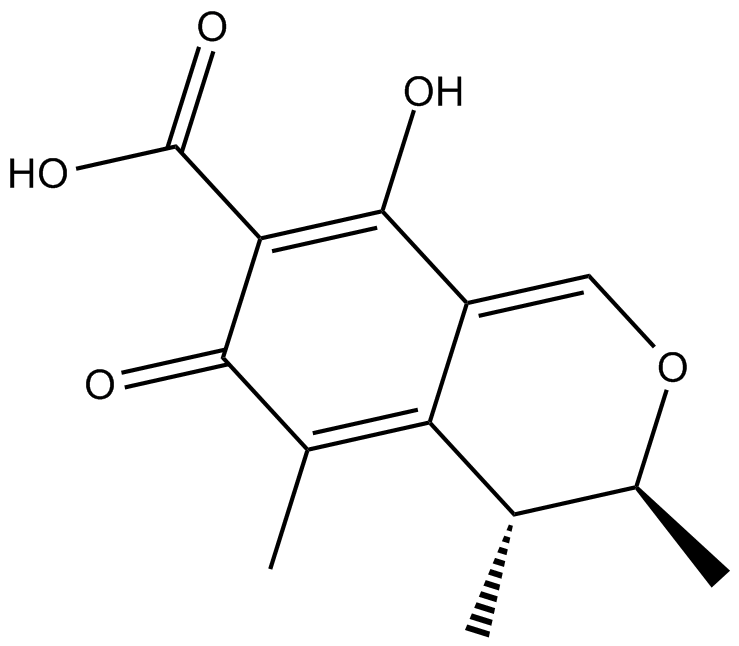Apoptosis
As one of the cellular death mechanisms, apoptosis, also known as programmed cell death, can be defined as the process of a proper death of any cell under certain or necessary conditions. Apoptosis is controlled by the interactions between several molecules and responsible for the elimination of unwanted cells from the body.
Many biochemical events and a series of morphological changes occur at the early stage and increasingly continue till the end of apoptosis process. Morphological event cascade including cytoplasmic filament aggregation, nuclear condensation, cellular fragmentation, and plasma membrane blebbing finally results in the formation of apoptotic bodies. Several biochemical changes such as protein modifications/degradations, DNA and chromatin deteriorations, and synthesis of cell surface markers form morphological process during apoptosis.
Apoptosis can be stimulated by two different pathways: (1) intrinsic pathway (or mitochondria pathway) that mainly occurs via release of cytochrome c from the mitochondria and (2) extrinsic pathway when Fas death receptor is activated by a signal coming from the outside of the cell.
Different gene families such as caspases, inhibitor of apoptosis proteins, B cell lymphoma (Bcl)-2 family, tumor necrosis factor (TNF) receptor gene superfamily, or p53 gene are involved and/or collaborate in the process of apoptosis.
Caspase family comprises conserved cysteine aspartic-specific proteases, and members of caspase family are considerably crucial in the regulation of apoptosis. There are 14 different caspases in mammals, and they are basically classified as the initiators including caspase-2, -8, -9, and -10; and the effectors including caspase-3, -6, -7, and -14; and also the cytokine activators including caspase-1, -4, -5, -11, -12, and -13. In vertebrates, caspase-dependent apoptosis occurs through two main interconnected pathways which are intrinsic and extrinsic pathways. The intrinsic or mitochondrial apoptosis pathway can be activated through various cellular stresses that lead to cytochrome c release from the mitochondria and the formation of the apoptosome, comprised of APAF1, cytochrome c, ATP, and caspase-9, resulting in the activation of caspase-9. Active caspase-9 then initiates apoptosis by cleaving and thereby activating executioner caspases. The extrinsic apoptosis pathway is activated through the binding of a ligand to a death receptor, which in turn leads, with the help of the adapter proteins (FADD/TRADD), to recruitment, dimerization, and activation of caspase-8 (or 10). Active caspase-8 (or 10) then either initiates apoptosis directly by cleaving and thereby activating executioner caspase (-3, -6, -7), or activates the intrinsic apoptotic pathway through cleavage of BID to induce efficient cell death. In a heat shock-induced death, caspase-2 induces apoptosis via cleavage of Bid.
Bcl-2 family members are divided into three subfamilies including (i) pro-survival subfamily members (Bcl-2, Bcl-xl, Bcl-W, MCL1, and BFL1/A1), (ii) BH3-only subfamily members (Bad, Bim, Noxa, and Puma9), and (iii) pro-apoptotic mediator subfamily members (Bax and Bak). Following activation of the intrinsic pathway by cellular stress, pro‑apoptotic BCL‑2 homology 3 (BH3)‑only proteins inhibit the anti‑apoptotic proteins Bcl‑2, Bcl-xl, Bcl‑W and MCL1. The subsequent activation and oligomerization of the Bak and Bax result in mitochondrial outer membrane permeabilization (MOMP). This results in the release of cytochrome c and SMAC from the mitochondria. Cytochrome c forms a complex with caspase-9 and APAF1, which leads to the activation of caspase-9. Caspase-9 then activates caspase-3 and caspase-7, resulting in cell death. Inhibition of this process by anti‑apoptotic Bcl‑2 proteins occurs via sequestration of pro‑apoptotic proteins through binding to their BH3 motifs.
One of the most important ways of triggering apoptosis is mediated through death receptors (DRs), which are classified in TNF superfamily. There exist six DRs: DR1 (also called TNFR1); DR2 (also called Fas); DR3, to which VEGI binds; DR4 and DR5, to which TRAIL binds; and DR6, no ligand has yet been identified that binds to DR6. The induction of apoptosis by TNF ligands is initiated by binding to their specific DRs, such as TNFα/TNFR1, FasL /Fas (CD95, DR2), TRAIL (Apo2L)/DR4 (TRAIL-R1) or DR5 (TRAIL-R2). When TNF-α binds to TNFR1, it recruits a protein called TNFR-associated death domain (TRADD) through its death domain (DD). TRADD then recruits a protein called Fas-associated protein with death domain (FADD), which then sequentially activates caspase-8 and caspase-3, and thus apoptosis. Alternatively, TNF-α can activate mitochondria to sequentially release ROS, cytochrome c, and Bax, leading to activation of caspase-9 and caspase-3 and thus apoptosis. Some of the miRNAs can inhibit apoptosis by targeting the death-receptor pathway including miR-21, miR-24, and miR-200c.
p53 has the ability to activate intrinsic and extrinsic pathways of apoptosis by inducing transcription of several proteins like Puma, Bid, Bax, TRAIL-R2, and CD95.
Some inhibitors of apoptosis proteins (IAPs) can inhibit apoptosis indirectly (such as cIAP1/BIRC2, cIAP2/BIRC3) or inhibit caspase directly, such as XIAP/BIRC4 (inhibits caspase-3, -7, -9), and Bruce/BIRC6 (inhibits caspase-3, -6, -7, -8, -9).
Any alterations or abnormalities occurring in apoptotic processes contribute to development of human diseases and malignancies especially cancer.
References:
1.Yağmur Kiraz, Aysun Adan, Melis Kartal Yandim, et al. Major apoptotic mechanisms and genes involved in apoptosis[J]. Tumor Biology, 2016, 37(7):8471.
2.Aggarwal B B, Gupta S C, Kim J H. Historical perspectives on tumor necrosis factor and its superfamily: 25 years later, a golden journey.[J]. Blood, 2012, 119(3):651.
3.Ashkenazi A, Fairbrother W J, Leverson J D, et al. From basic apoptosis discoveries to advanced selective BCL-2 family inhibitors[J]. Nature Reviews Drug Discovery, 2017.
4.McIlwain D R, Berger T, Mak T W. Caspase functions in cell death and disease[J]. Cold Spring Harbor perspectives in biology, 2013, 5(4): a008656.
5.Ola M S, Nawaz M, Ahsan H. Role of Bcl-2 family proteins and caspases in the regulation of apoptosis[J]. Molecular and cellular biochemistry, 2011, 351(1-2): 41-58.
What is Apoptosis? The Apoptotic Pathways and the Caspase Cascade
أهداف لـ نبسب؛ Apoptosis
- Pyroptosis(15)
- Caspase(77)
- 14.3.3 Proteins(3)
- Apoptosis Inducers(71)
- Bax(15)
- Bcl-2 Family(136)
- Bcl-xL(13)
- c-RET(15)
- IAP(32)
- KEAP1-Nrf2(73)
- MDM2(21)
- p53(137)
- PC-PLC(6)
- PKD(8)
- RasGAP (Ras- P21)(2)
- Survivin(8)
- Thymidylate Synthase(12)
- TNF-α(141)
- Other Apoptosis(1144)
- Apoptosis Detection(0)
- Caspase Substrate(0)
- APC(6)
- PD-1/PD-L1 interaction(60)
- ASK1(4)
- PAR4(2)
- RIP kinase(47)
- FKBP(22)
منتجات لـ نبسب؛ Apoptosis
- القط. رقم اسم المنتج بيانات
-
GC47042
Carfilzomib-d8
معيار داخلي لتحديد كمية الكارفيلزوميب
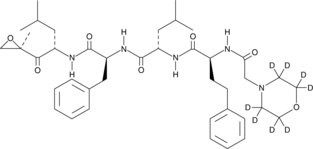
-
GN10733
Carnosic acid
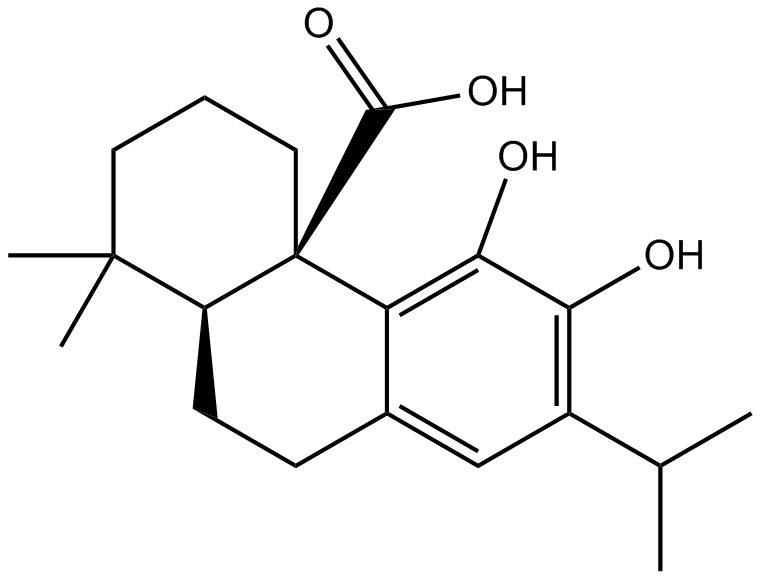
-
GC45679
Carubicin
الكاروبيسين (كارمينوميسين) مركب مشتق من الميكروبات
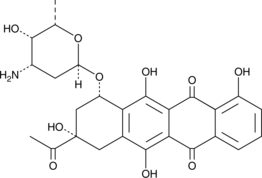
-
GC64110
Carubicin hydrochloride
هيدروكلوريد الكاروبيسين مركب مشتق من الميكروبات
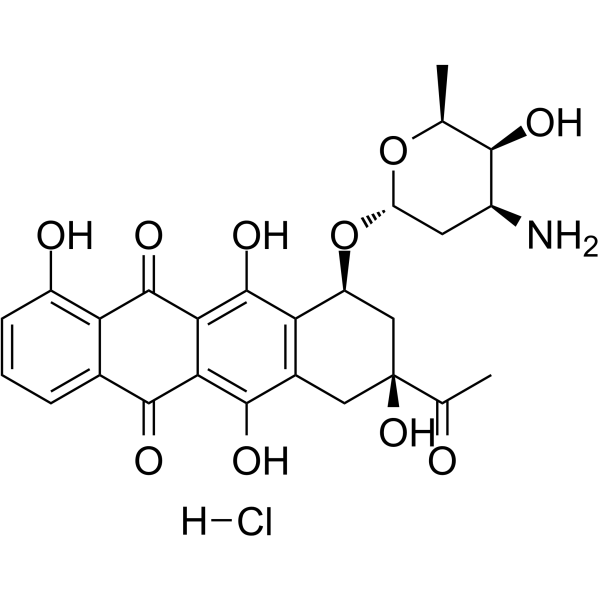
-
GC35612
Carvacrol
كارفاكرول هو الفينول أحادي التيربينويد المعزول من الغدة الصعترية رون.
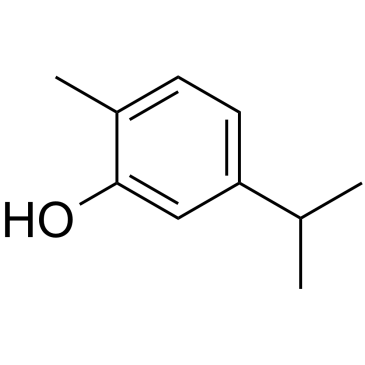
-
GC62442
Casein Kinase inhibitor A51
مثبط الكازين كيناز A51 هو مثبط فعال وفعال شفويا للكازين كيناز 1α (CK1α)يحث مثبط الكازين كيناز A51 على موت الخلايا المبرمج لسرطان الدم ، وله أنشطة قوية لمكافحة اللوكيميا
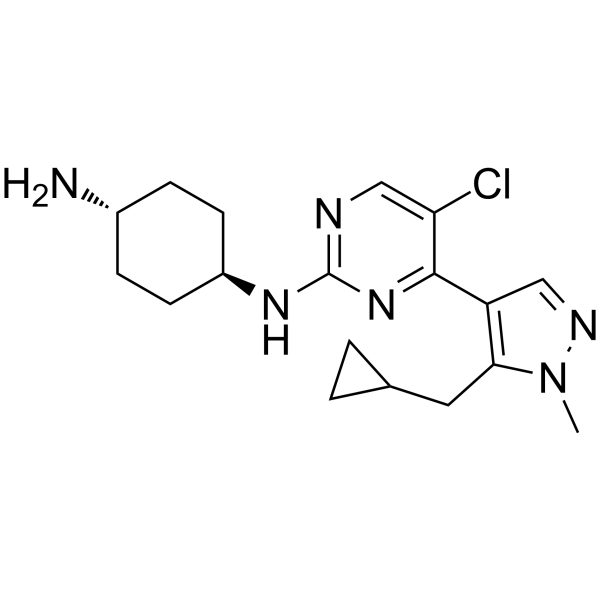
-
GC32841
Catechin ((+)-Catechin)
Catechin ((+) -Catechin) ((+) -Catechin ((+) -Catechin)) يثبط انزيمات الأكسدة الحلقية -1 (COX-1) مع IC50 من 1.4 μ ؛ M.
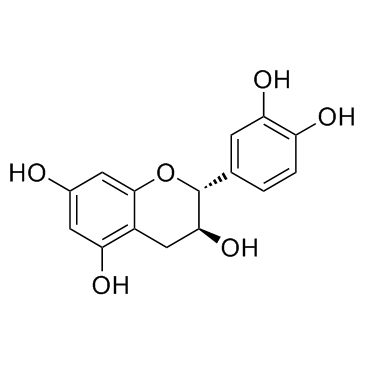
-
GN10543
caudatin
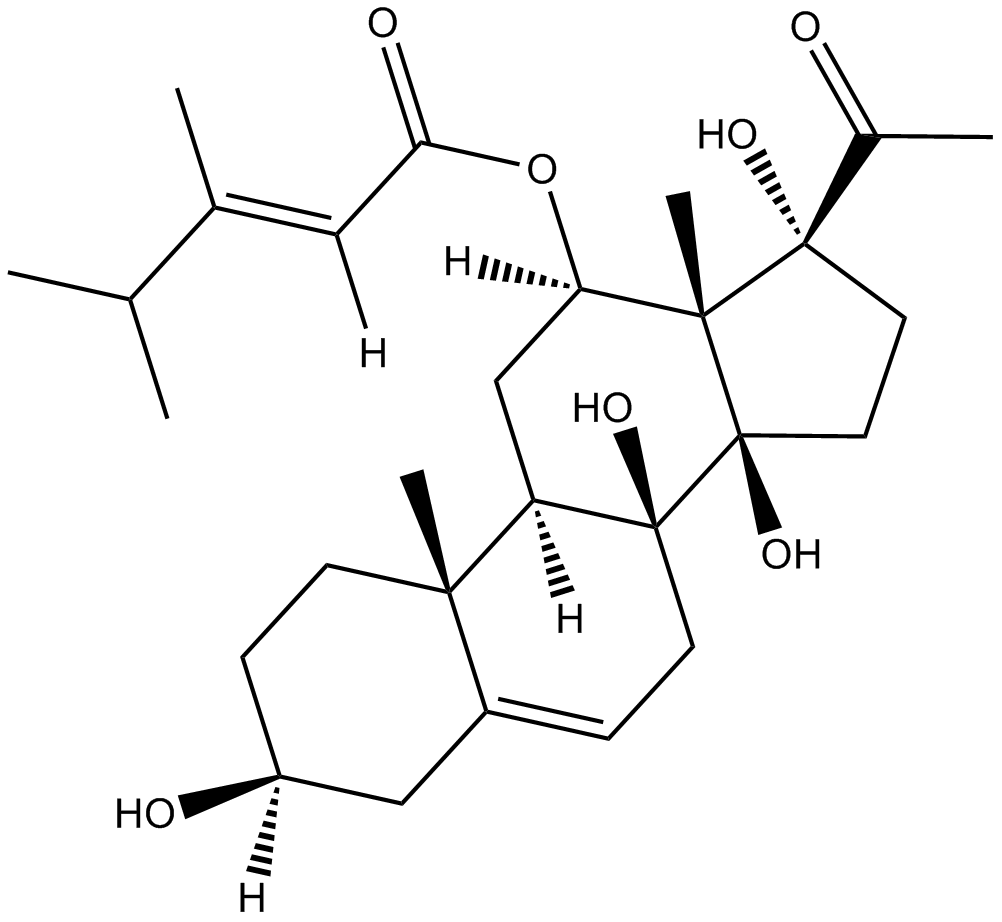
-
GC43149
CAY10404
CAY10404 هو مثبط فعال وانتقائي لانزيمات الأكسدة الحلقية 2 (COX-2) مع IC50 من 1 نانومتر ومؤشر انتقائية (SI ؛ COX-1 IC50 / COX-2 IC50)> 500000
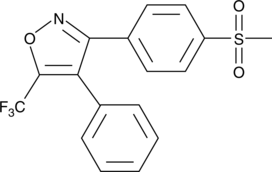
-
GC43150
CAY10406
CAY10406 is a trifluoromethyl analog of an isatin sulfonamide compound that selectively inhibits caspases 3 and 7.
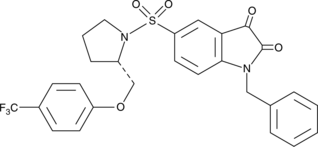
-
GC43154
CAY10443
Mitochondrial release of cytochrome c triggers apoptosis via the assembly of a multimeric complex including caspase-9, Apaf-1, and other components, sometimes called the apoptosome.

-
GC43176
CAY10575
CAY10575 (المركب 8) هو مثبط IKK2 مع IC50 من 0.075 μ ؛ M.
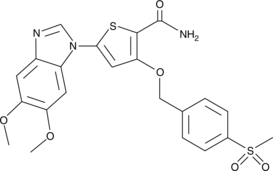
-
GC18530
CAY10616
Resveratrol is a natural polyphenolic antioxidant that has anti-cancer properties.
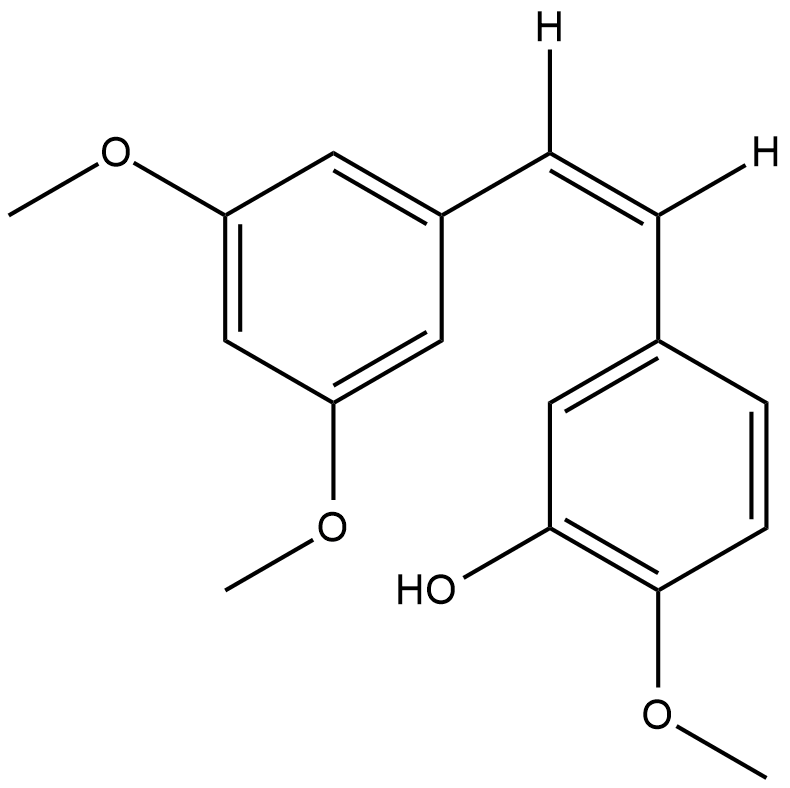
-
GC41317
CAY10625
Survivin is a cellular protein implicated in cell survival by interacting with and inhibiting the apoptotic function of several proteins including Smac/DIABLO, caspase-3, and caspase-7.
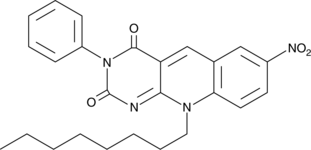
-
GC43189
CAY10681
Inactivation of the tumor suppressor p53 commonly coincides with increased signaling through NF-κB in cancer.
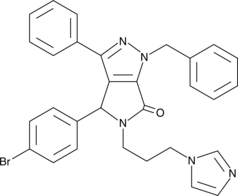
-
GC43190
CAY10682
(±)-Nutlin-3 blocks the interaction of p53 with its negative regulator Mdm2 (IC50 = 90 nM), inducing the expression of p53-regulated genes and blocking the growth of tumor xenografts in vivo.
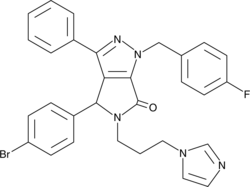
-
GC40650
CAY10706
CAY10706 is a ligustrazine-curcumin hybrid that promotes intracellular reactive oxygen species accumulation preferentially in lung cancer cells.

-
GC43198
CAY10717
CAY10717 is a multi-targeted kinase inhibitor that exhibits greater than 40% inhibition of 34 of 104 kinases in an enzymatic assay at a concentration of 100 nM.

-
GC43203
CAY10726
CAY10726 is an arylurea fatty acid.

-
GC46113
CAY10744
A topoisomerase II-α poison
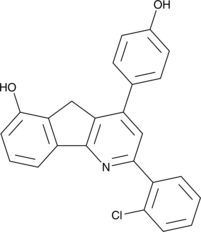
-
GC47053
CAY10746
A ROCK1 and ROCK2 inhibitor

-
GC48392
CAY10747
An inhibitor of the Hsp90-Cdc37 protein-protein interaction
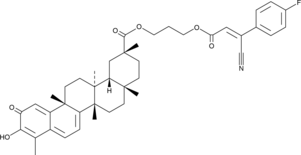
-
GC47055
CAY10749
CAY10749 (المركب 15) هو مثبط قوي لـ PARP / PI3K بقيم pIC50 تساوي 8.22 ، 8.44 ، 8.25 ، 6.54 ، 8.13 ، 6.08 لـ PARP-1 ، PARP-2 ، PI3Kα ؛ ، PI3Kβ ؛ PI3Kβ ؛ PI3K7777 ؛ 77#946 على التوالي. . CAY10749 هو مركب فعال للغاية مضاد للسرطان يستهدف مجموعة واسعة من أمراض الأورام.
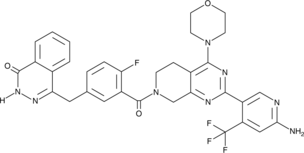
-
GC47057
CAY10755
A fungal metabolite with anticancer activity
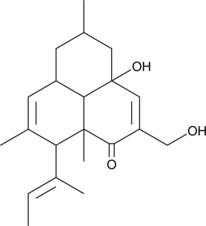
-
GC47061
CAY10763
A dual inhibitor of IDO1 and STAT3 activation
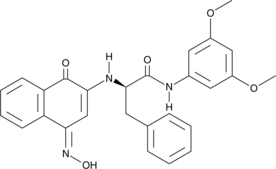
-
GC47065
CAY10773
A derivative of sorafenib
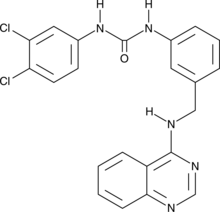
-
GC49080
CAY10786
CAY10786 (المركب 43) هو مضاد GPR52 مع IC50 من 0.63 μ ؛ م.

-
GC52245
CAY10792
An anticancer agent
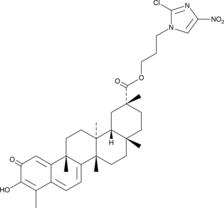
-
GC14634
CBL0137
curaxin that activates p53 and inhibits NF-κB
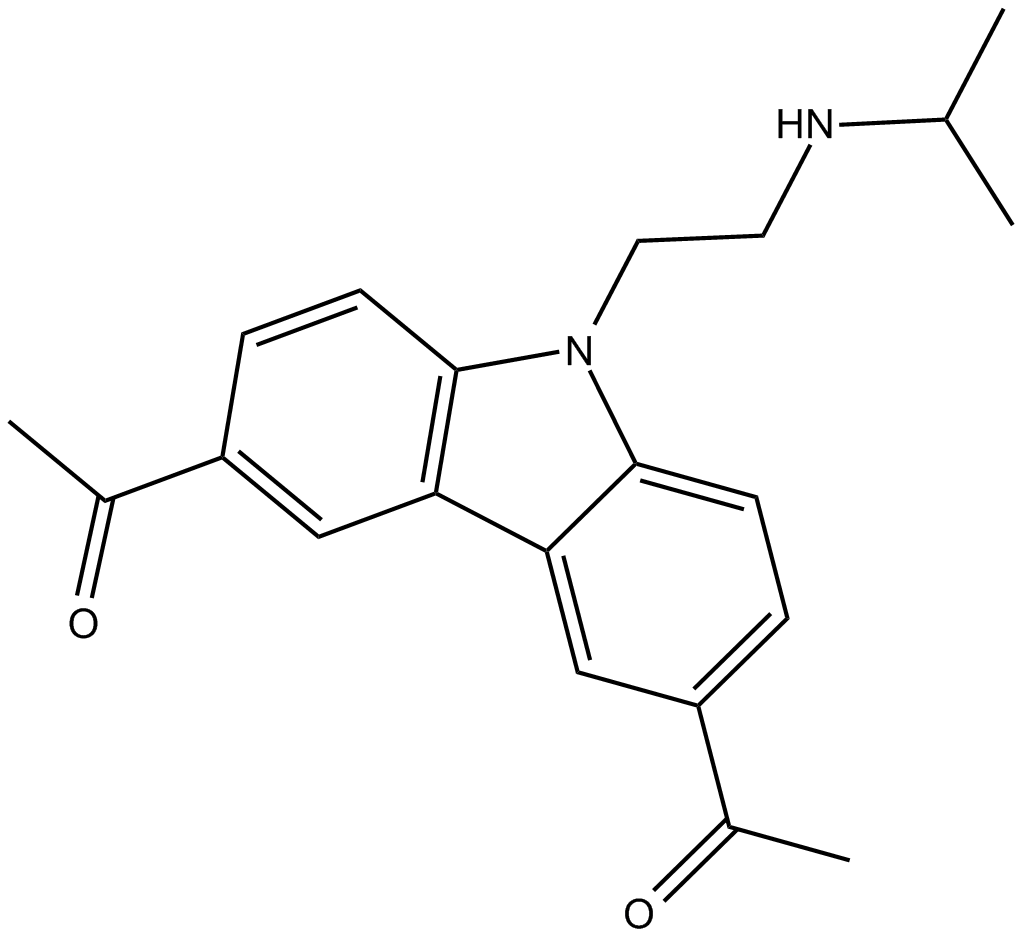
-
GC15394
CBL0137 (hydrochloride)
CBL0137 (هيدروكلوريد) هو مثبط للهيستون تشبيرون ، FACT. يمكن لـ CBL0137 (هيدروكلوريد) أيضًا تنشيط p53 ويمنع NF- B مع EC50s 0.37 و 0.47 ميكرومتر ، على التوالي.
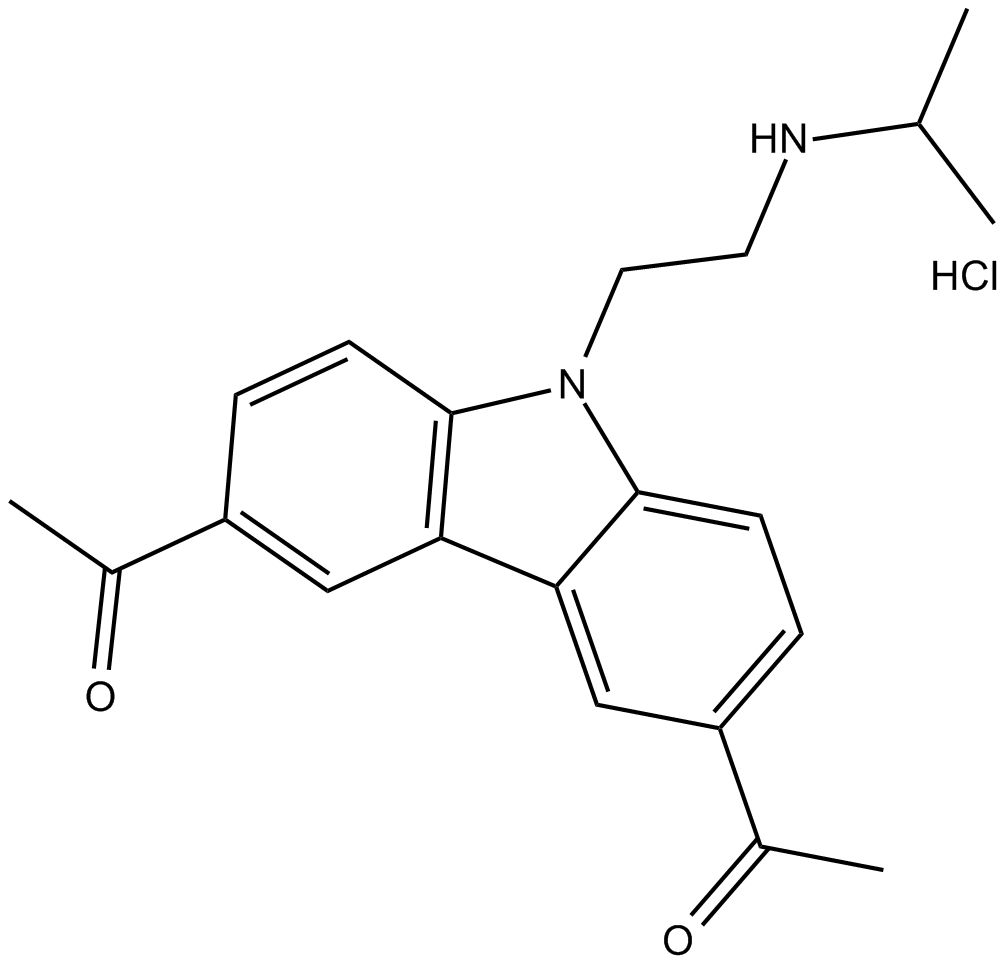
-
GC61636
CBR-470-2
يمكن لـ CBR-470-2 ، وهو نظير مستبدل بالجليسين ، تنشيط إشارات NRF2
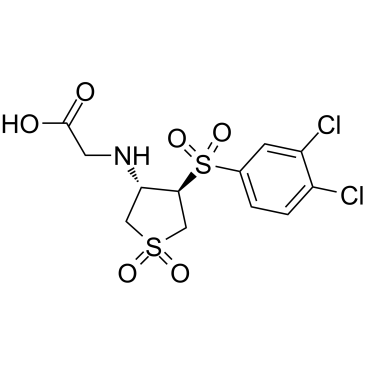
-
GC13648
CC-223
CC-223 (CC-223) هو مثبط قوي وانتقائي ومتوفر بيولوجيًا عن طريق الفم لـ mTOR kinase ، مع قيمة IC50 لـ mTOR كيناز تبلغ 16 نانومتر. CC-223 يمنع كلاً من mTORC1 و mTORC2.
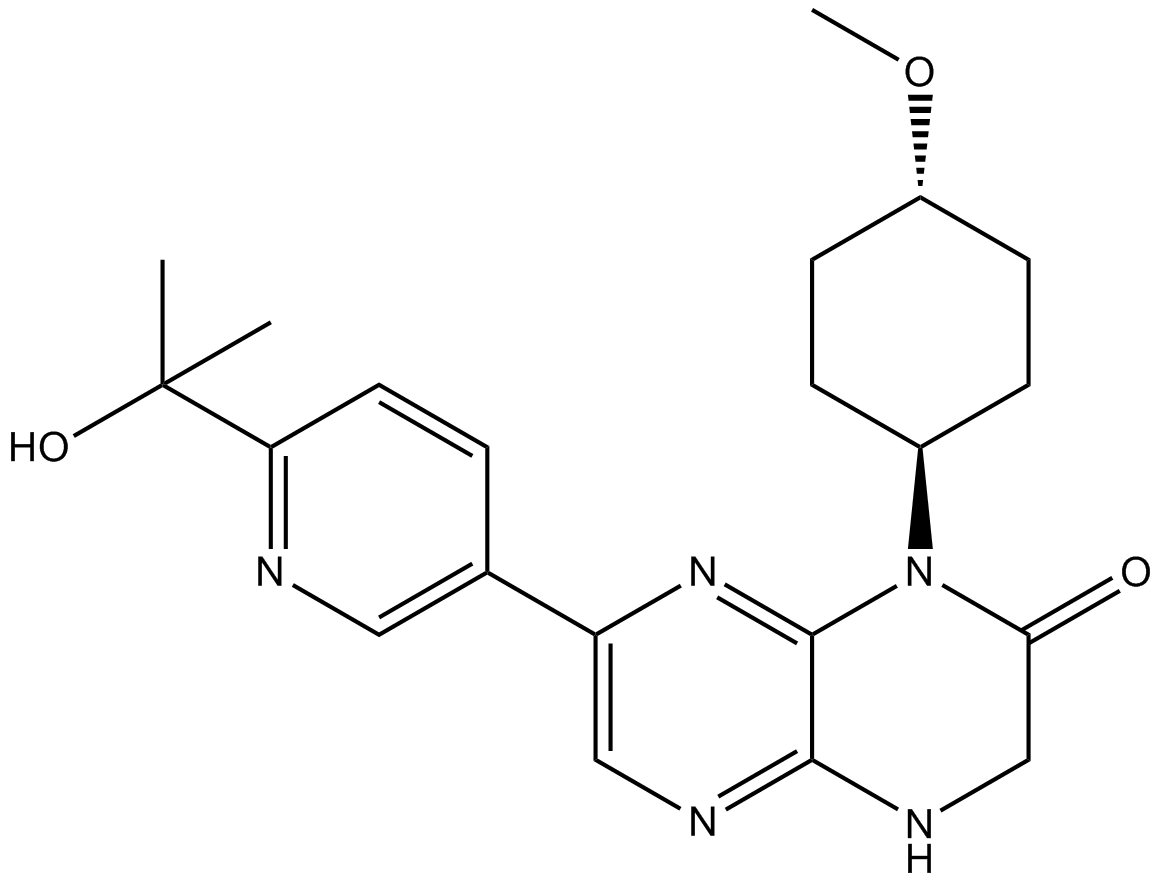
-
GC39169
CC-92480
CC-92480 (CC-92480) ، دواء تعديل ليجيز سيريبلون E3 يوبيكويتين (CELMoD) ، يعمل كغراء جزيئي. يُظهر CC-92480 تقاربًا كبيرًا مع cereblon ، مما يؤدي إلى نشاط قوي مضاد للورم النخاعي.
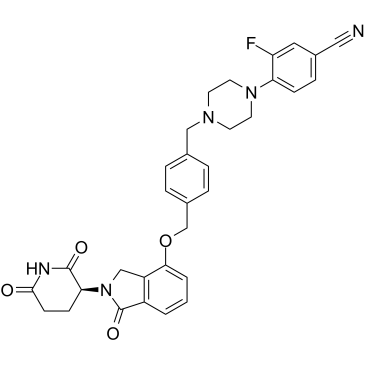
-
GC19088
CC122
CC122 (CC 122) عبارة عن مُعدِّل cereblon نشط شفهيًا.
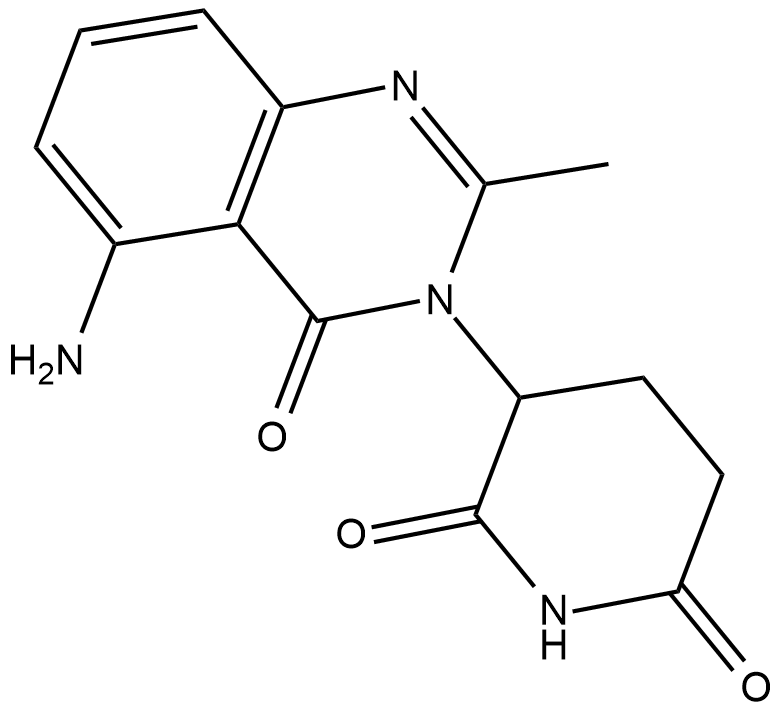
-
GC61532
CCI-007
CCI-007 هو جزيء صغير له نشاط سام للخلايا ضد سرطان الدم عند الرضع مع إعادة ترتيب MLL ، مع قيم IC50 من 2.5-6.2 ميكرومتر في الخلايا الحساسة
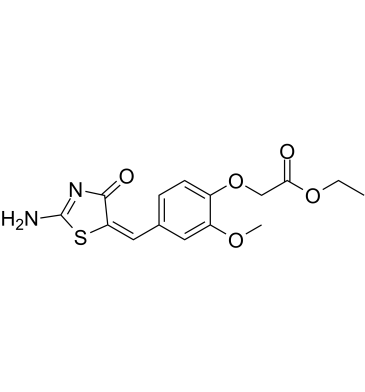
-
GC12891
CCT007093
CCT007093 هو مثبط فعال لفوسفاتيز البروتين 1D (PPM1D Wip1)يمكن أن يؤدي تثبيط Wip1 إلى تنشيط مسار mTORC1 وتعزيز تكاثر خلايا الكبد بعد استئصال الكبد
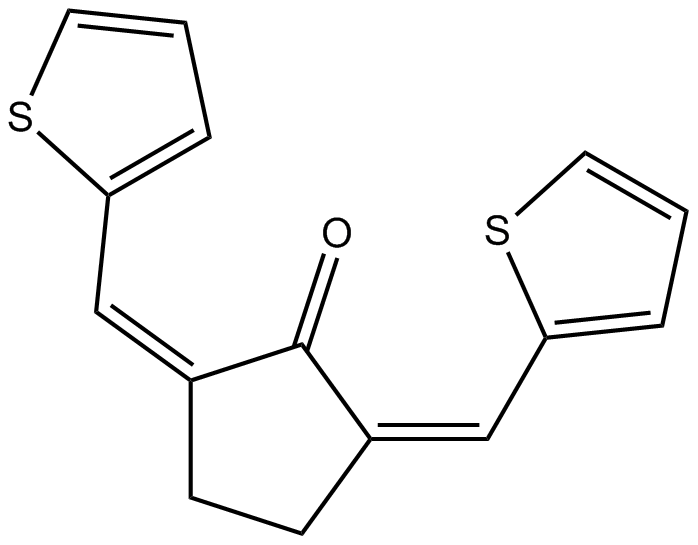
-
GC14566
CCT137690
An inhibitor of Aurora kinases and FLT3
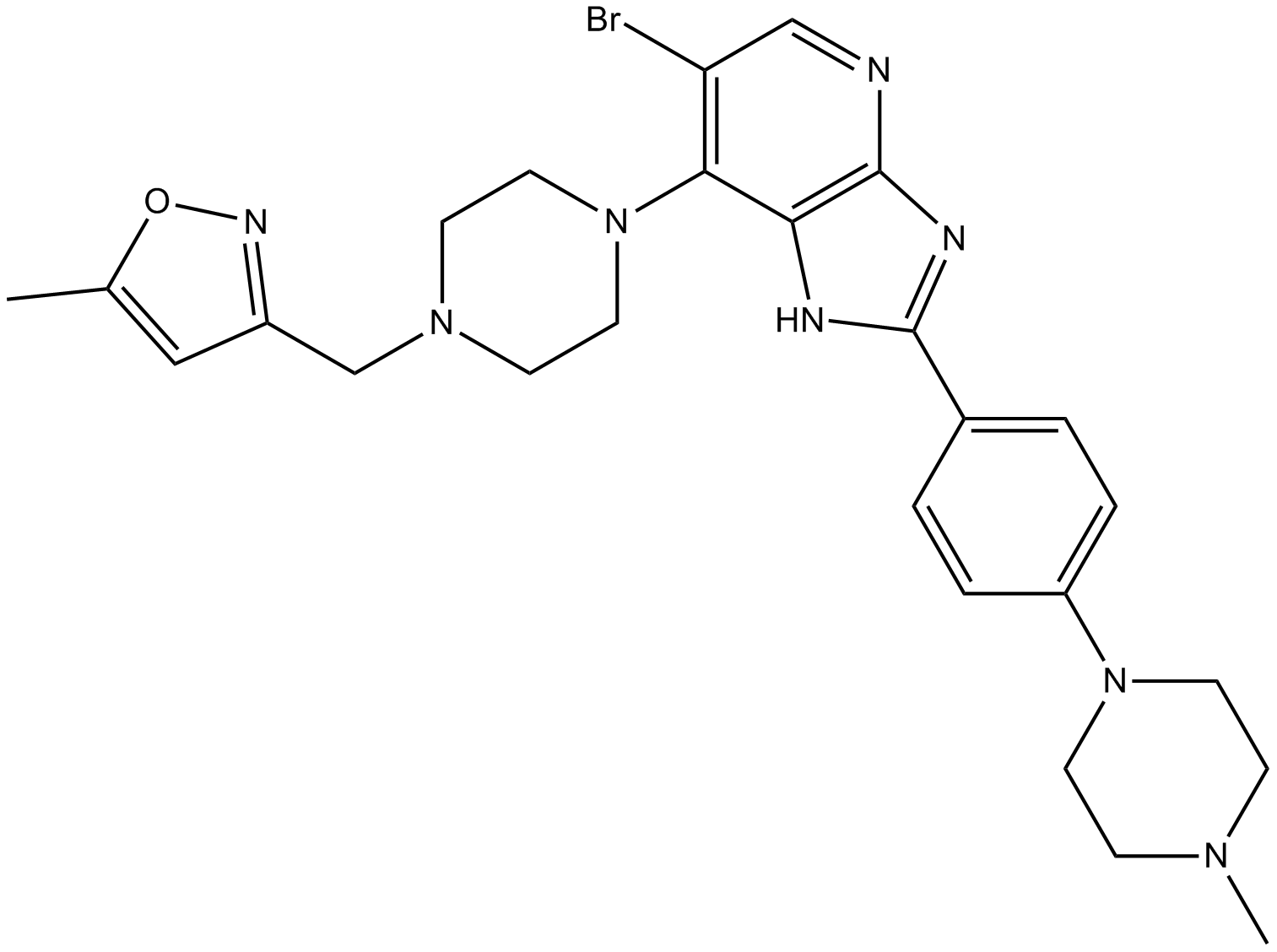
-
GC62561
CCT369260
CCT369260 (المركب 1) هو مثبط شفوي لمفومة الخلايا B 6 (BCL6) مع نشاط مضاد للورميعرض CCT369260 (المركب 1) IC50 من 520 نانومتر
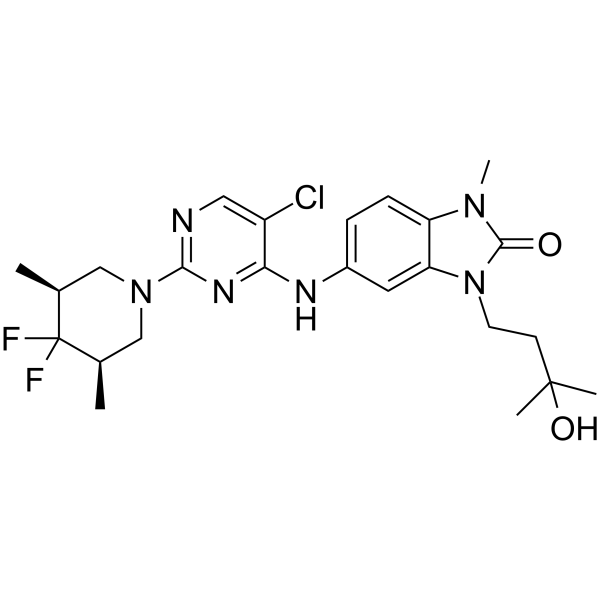
-
GC33337
CDC801
CDC801 هو فوسفوديستيراز 4 فعال وفعال عن طريق الفم (PDE4) وعامل نخر الورم - α ؛ (TNF-α ؛) مثبط مع IC50 1.1 μ ؛ M و 2.5 μ ؛ M ، على التوالي.
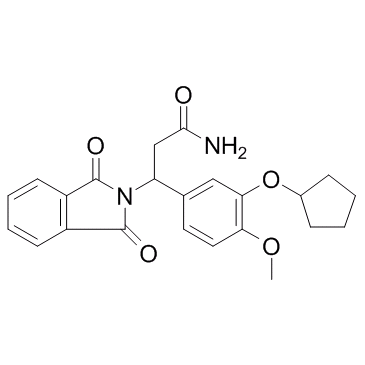
-
GC39555
CDDO-2P-Im
CDDO-2P-Im هو نظير لـ CDDO-Imidazolide مع تأثير وقائي كيميائييمكن أن يقلل CDDO-2P-Im من حجم وشدة أورام الرئة في نموذج سرطان الرئة بالفأر
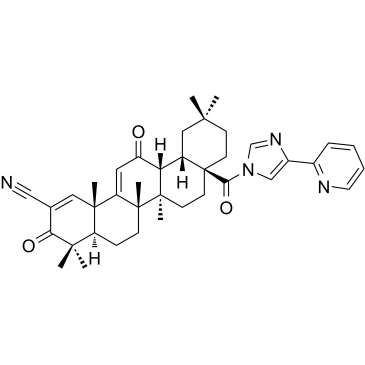
-
GC39556
CDDO-3P-Im
CDDO-3P-Im هو نظير لـ CDDO-Imidazolide مع تأثير وقائي كيميائييمكن أن يقلل CDDO-3P-Im من حجم وشدة أورام الرئة في نموذج سرطان الرئة بالفأرCDDO-3P-Im هو مثبط النخر النشط عن طريق الفم والذي يمكن استخدامه للبحث عن نقص التروية / ضخه (I / R)
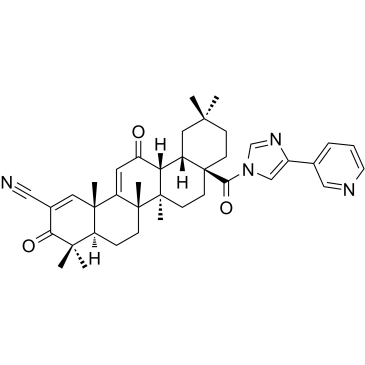
-
GC35629
CDDO-dhTFEA
CDDO-dhTFEA (RTA dh404) عبارة عن مركب مركب oleanane triterpenoid الذي ينشط Nrf2 بشكل فعال ويثبط عامل النسخ المؤيد للالتهابات NF-B
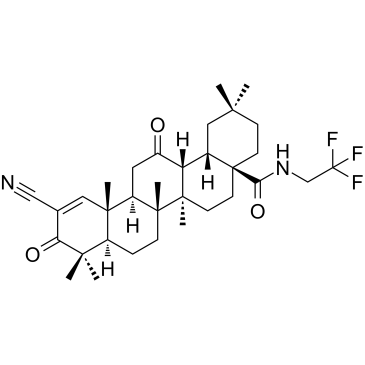
-
GC35630
CDDO-EA
CDDO-EA هو عامل منشط 2 / عامل استجابة مضاد للأكسدة (Nrf2 / ARE) مرتبط بـ NF-E2

-
GC32723
CDDO-Im (RTA-403)
CDDO-Im (RTA-403) (RTA-403) هو منشط لـ Nrf2 و PPAR ، مع Kis من 232 و 344 نانومتر لـ PPARα ؛ و PPARγ ؛.
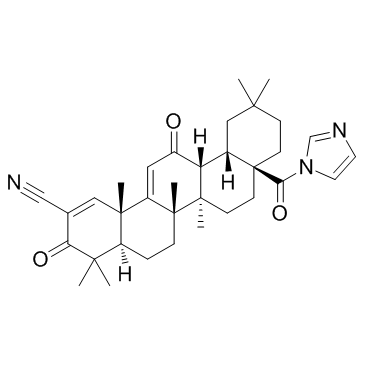
-
GC16625
CDDO-TFEA
Nrf2 activator
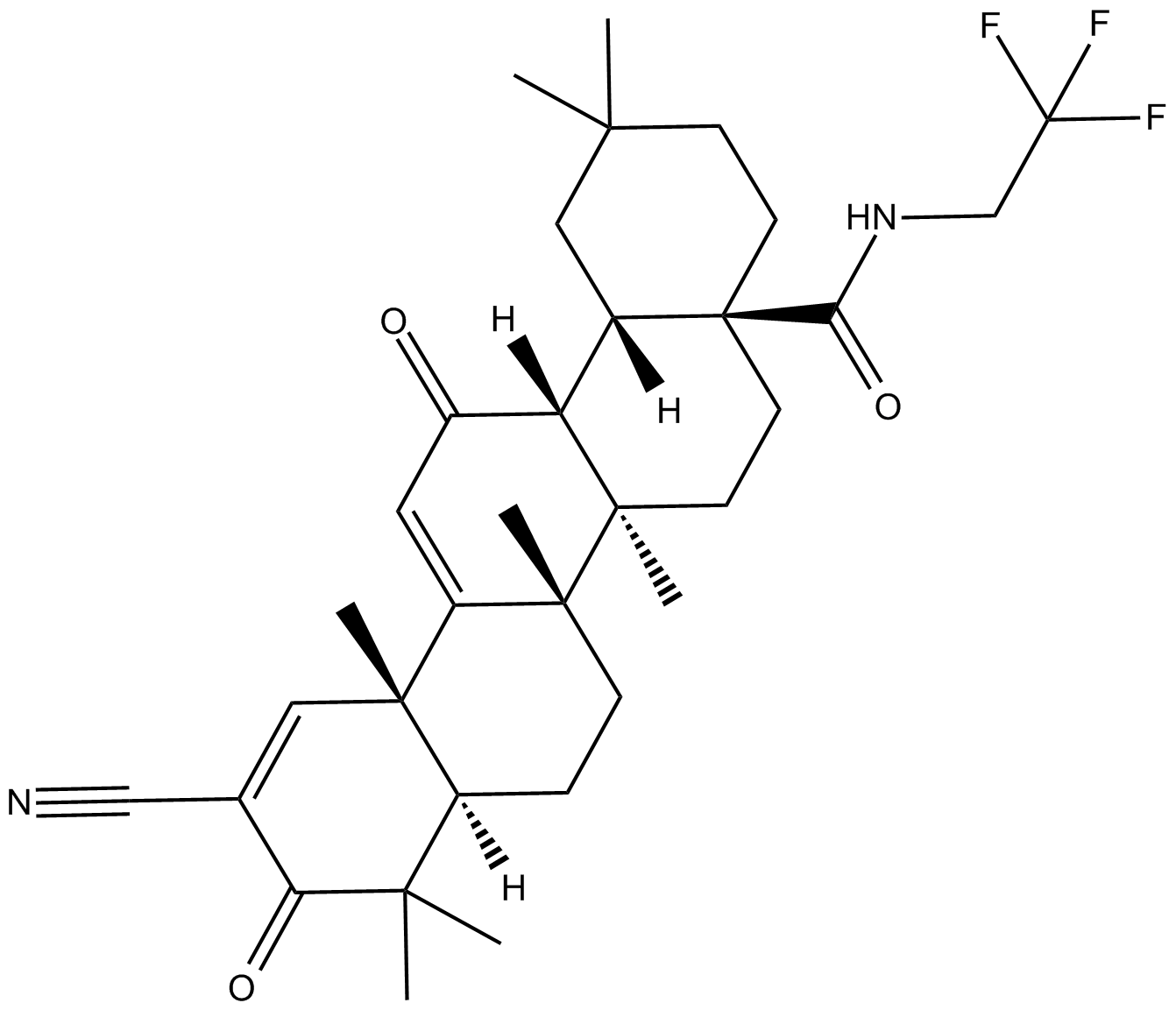
-
GC43217
CDK/CRK Inhibitor
CDK/CRK inhibitor is an inhibitor of cyclin-dependent kinases (CDK) and CDK-related kinases (CRK) with IC50 values ranging from 9-839 nM in vitro.
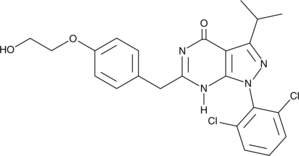
-
GC62596
CDK7-IN-3
CDK7-IN-3 (CDK7-IN-3) هو مثبط CDK7 نشط شفويًا وانتقائي للغاية وغير تساهمي مع دينار كويتي يبلغ 0.065 نانومتر. يُظهر CDK7-IN-3 تثبيطًا ضعيفًا على CDK2 (Ki = 2600 نانومتر) ، CDK9 (Ki = 960 نانومتر) ، CDK12 (Ki = 870 نانومتر). يحرض CDK7-IN-3 موت الخلايا المبرمج في الخلايا السرطانية وله نشاط مضاد للأورام.
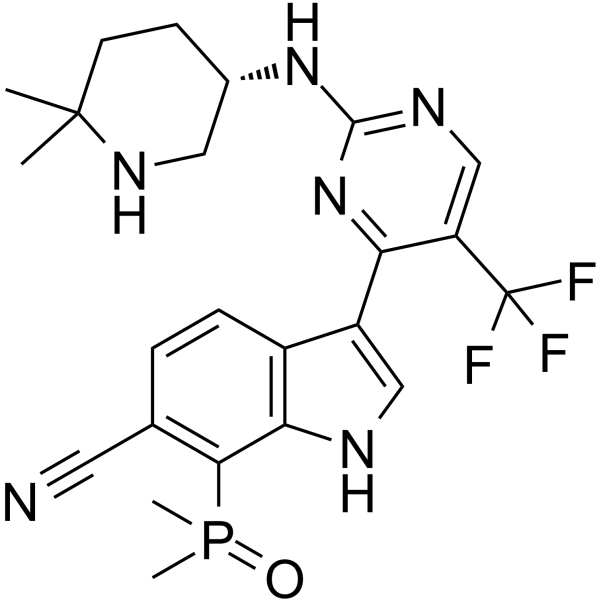
-
GC35636
CDK9-IN-7
CDK9-IN-7 (المركب 21e) هو مثبط CDK9 / cyclin T انتقائي وفعال للغاية وفعال عن طريق الفم (IC50 = 11 نانومتر) ، والذي يظهر أكثر فاعلية على CDKs الأخرى (CDK4 / cyclinD = 148 نانومتر ؛ CDK6 / cyclinD = 145 نانومتر)يُظهر CDK9-IN-7 نشاطًا مضادًا للورم بدون سمية واضحةيستحث CDK9-IN-7 موت الخلايا المبرمج NSCLC ، ويوقف دورة الخلية في المرحلة G2 ، ويثبط خصائص الجذعية لـ NSCLC
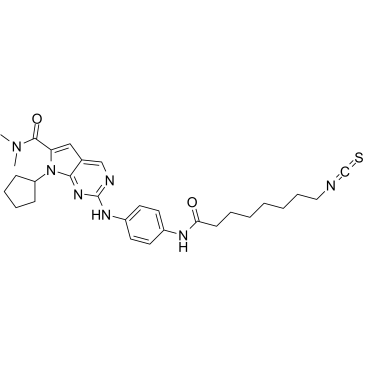
-
GC19096
CDKI-73
CDKI-73 (LS-007) هو مثبط CDK9 نشط شفويًا وفعال للغاية ، بقيم Ki تبلغ 4 نانومتر و 4 نانومتر و 3 نانومتر لـ CDK9 و CDK1 و CDK2 ، على التوالي
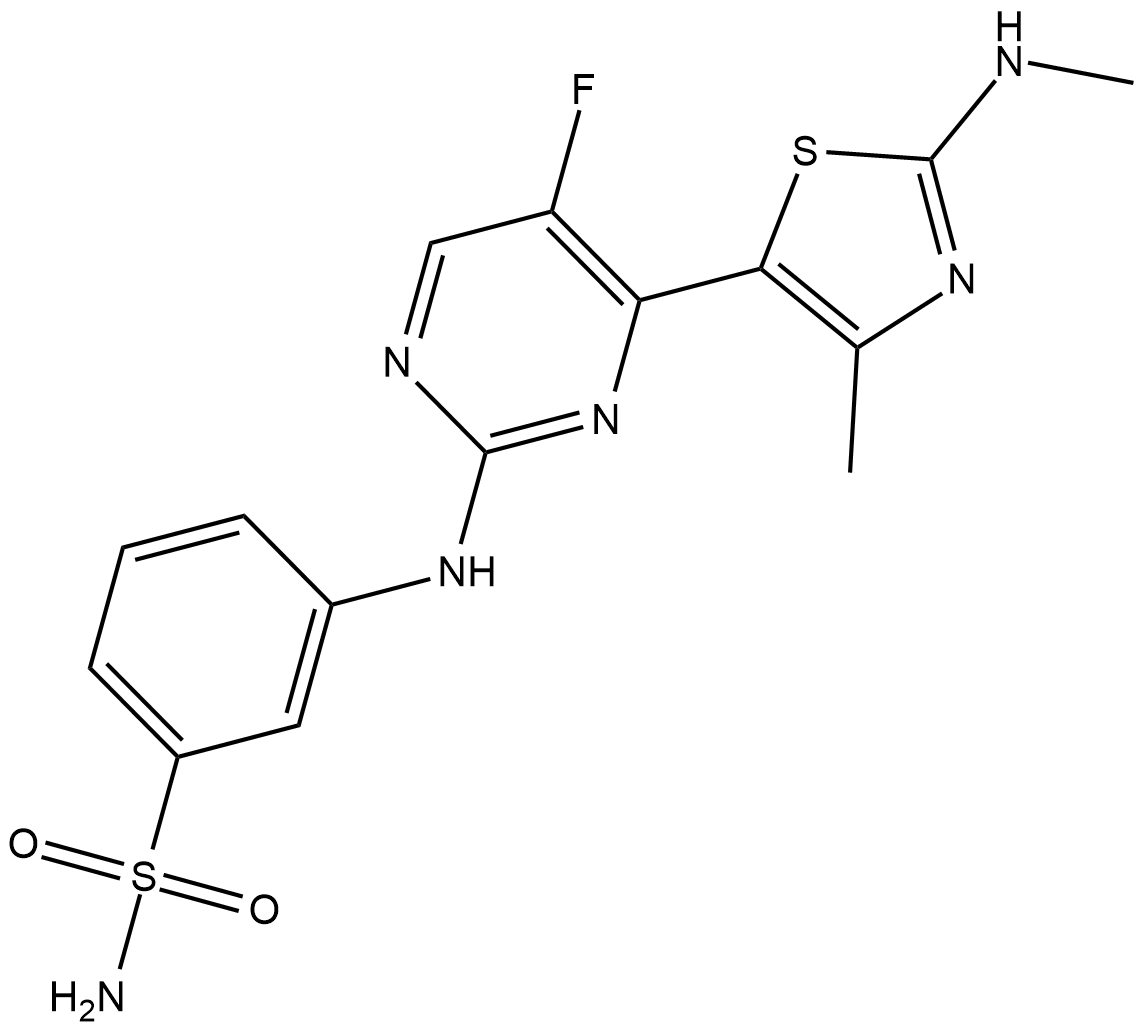
-
GC61865
Cearoin
يزيد Cearoin من الالتهام الذاتي وموت الخلايا المبرمج من خلال إنتاج ROS وتفعيل ERK
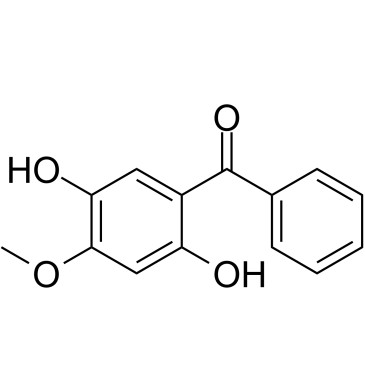
-
GC15083
Celastrol
A triterpenoid antioxidant
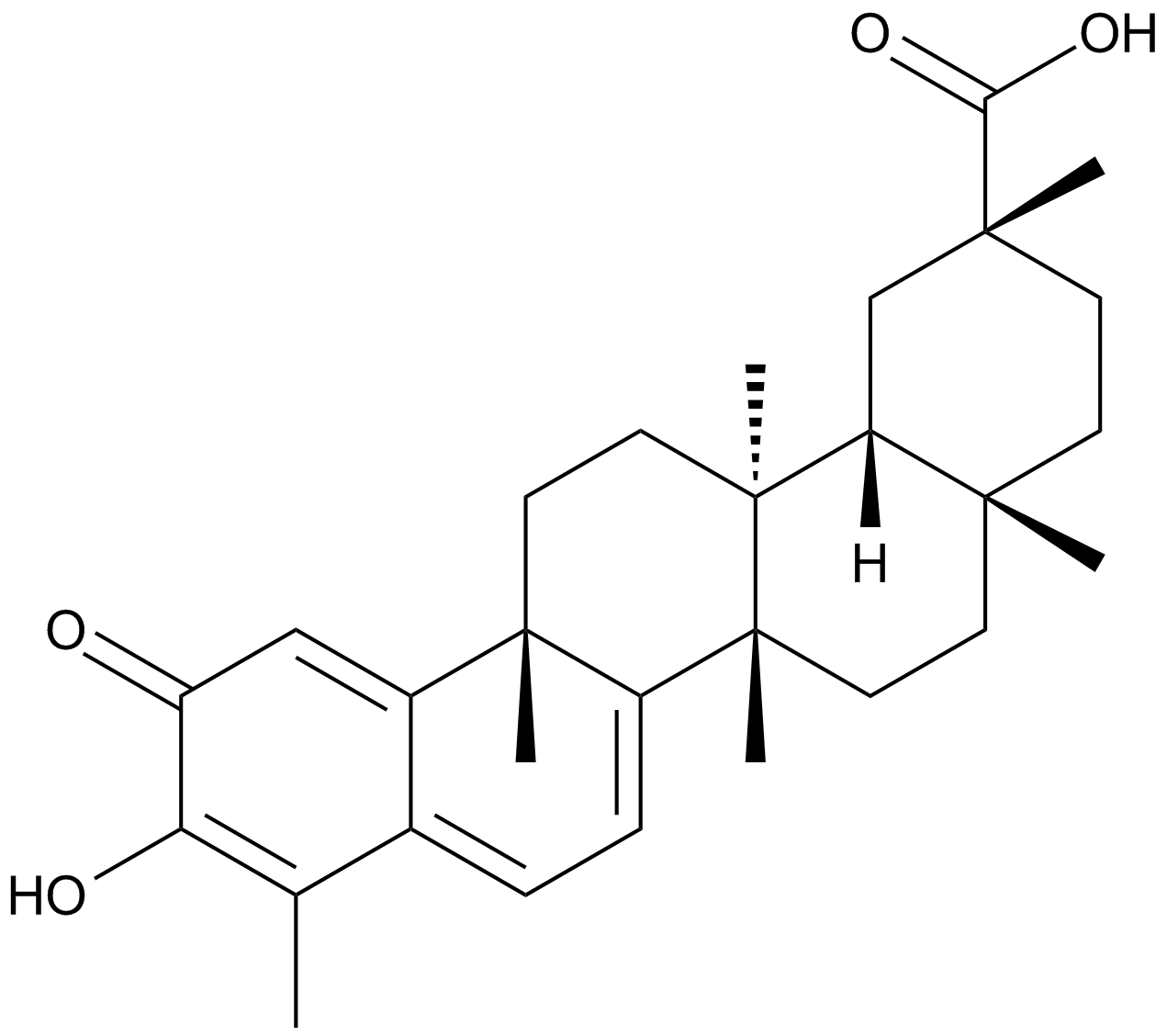
-
GC49152
Celecoxib Carboxylic Acid
An inactive metabolite of celecoxib
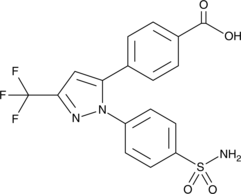
-
GC47070
Celecoxib-d7
An internal standard for the quantification of celecoxib
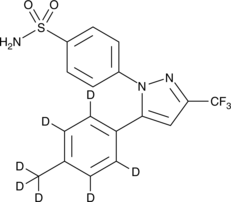
-
GC18392
Cellocidin
Cellocidin is an antibiotic originally isolated from S.
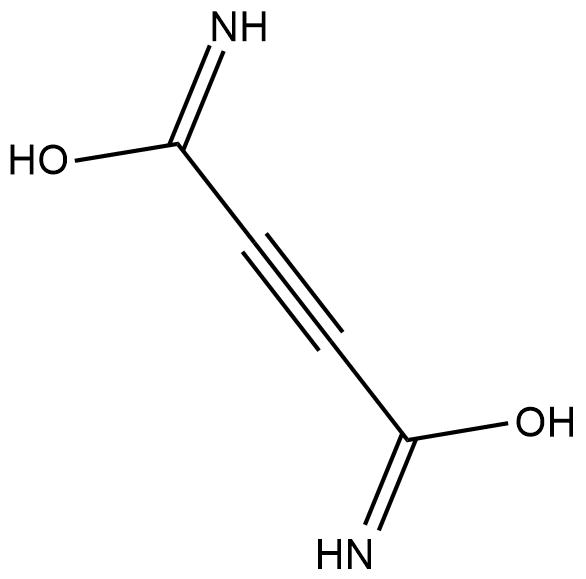
-
GN10113
Cepharanthine
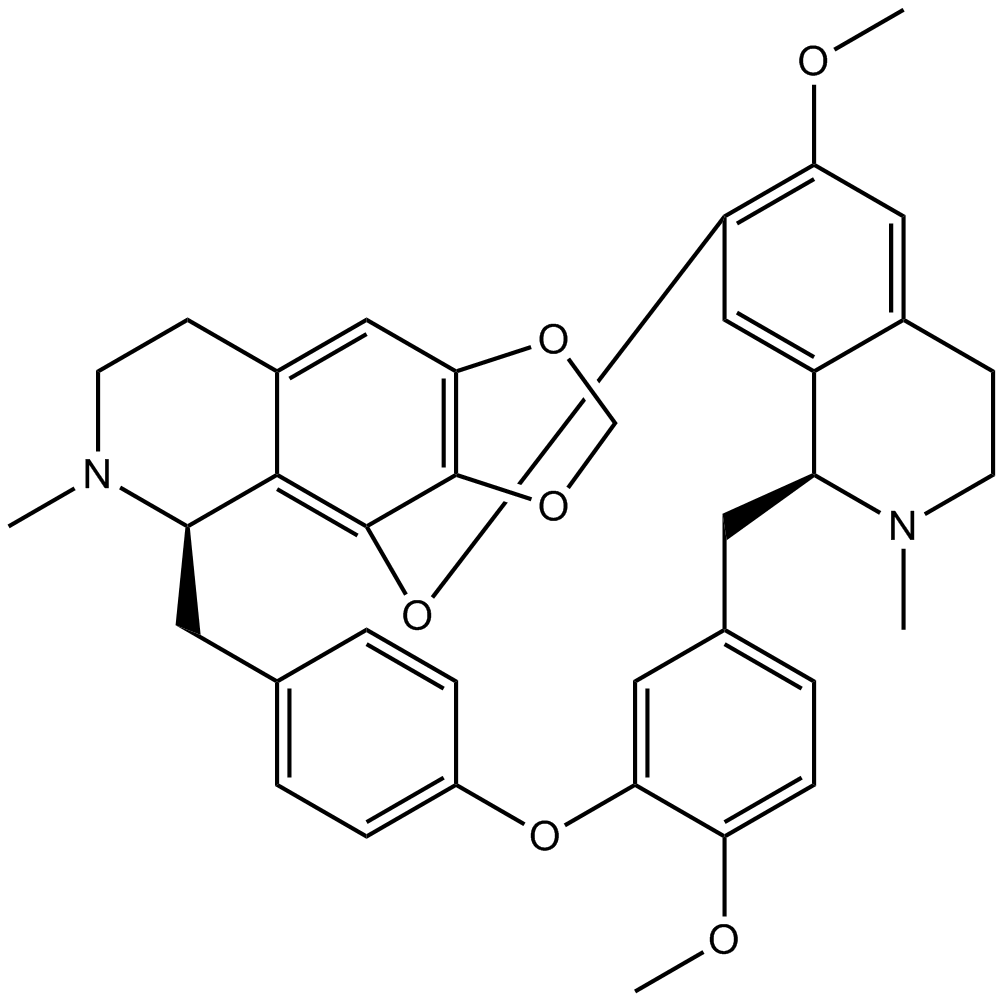
-
GC52489
Ceramide (hydroxy) (bovine spinal cord)
A sphingolipid

-
GC52485
Ceramide (non-hydroxy) (bovine spinal cord)
A sphingolipid
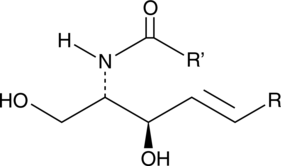
-
GC52486
Ceramide Phosphoethanolamine (bovine)
A sphingolipid

-
GC43229
Ceramide Phosphoethanolamines (bovine)
Ceramide phosphoethanolamine (CPE) is an analog of sphingomyelin that contains ethanolamine rather than choline as the head group.

-
GC47073
Ceramides (hydroxy)
A mixture of hydroxy fatty acid-containing ceramides

-
GC43230
Ceramides (non-hydroxy)
Ceramides are generated from sphingomyelin through activation of sphingomyelinases or through the de novo synthesis pathway, which requires the coordinated action of serine palmitoyl transferase and ceramide synthase.
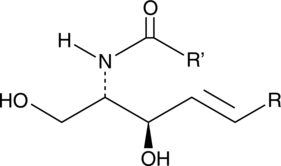
-
GC49706
Cerberin
A cardiac glycoside with cytotoxic and cardiac modulatory activities
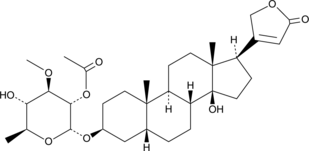
-
GC60688
Cereblon modulator 1
مُعدِّل Cereblon 1 (CC-90009) هو مُعدِّل ligase cereblon (CRBN) E3 الأول من نوعه في فئته ، ويعمل كغراء جزيئي.
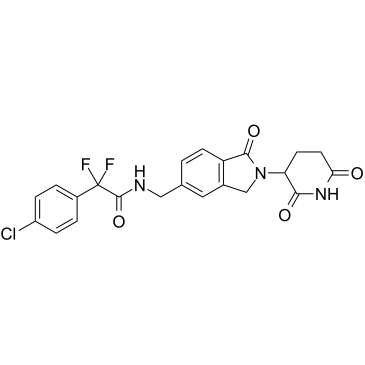
-
GC65487
Certolizumab pegol
سيرتوليزوماب بيغول (Certolizumab) هو جزء مضاد للجسم المستضد الحديث، والذي يتكون من تراكيب جزئية معقدة من الأحماض الأمينية. وهو عبارة عن نسخة اصطناعية لجزء من أجسام المضادات التي تستخدم في العلاجات المستهدفة للأورام، حيث يستهدف بشكل خاص ويلغى فعالية عامل نخر الورم-α (TNF-α).
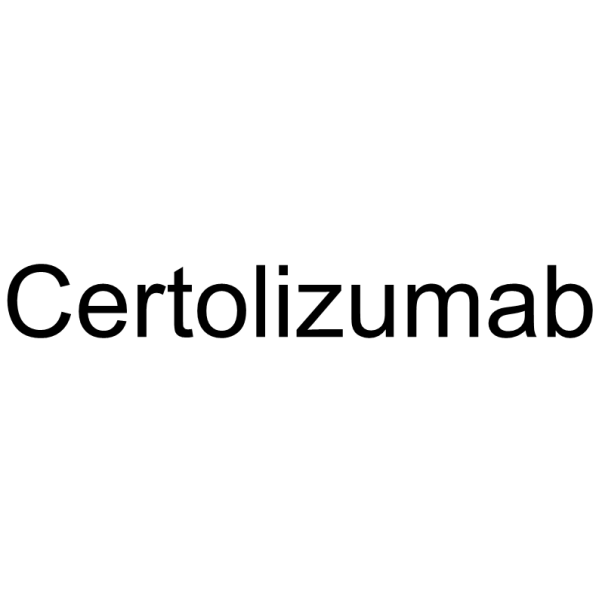
-
GC11543
Cesium chloride
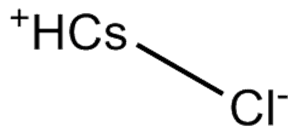
-
GC11710
CFM 4
CFM 4 هو مضاد جزيئي صغير قوي لربط CARP-1 / APC-2. يمنع CFM 4 ارتباط CARP-1 بـ APC-2 ، ويسبب توقف دورة خلية G2M ، ويحفز موت الخلايا المبرمج مع نطاق IC50 من 10-15 μ ؛ M. يمنع CFM 4 أيضًا نمو خلايا سرطان الثدي البشرية المقاومة للأدوية.
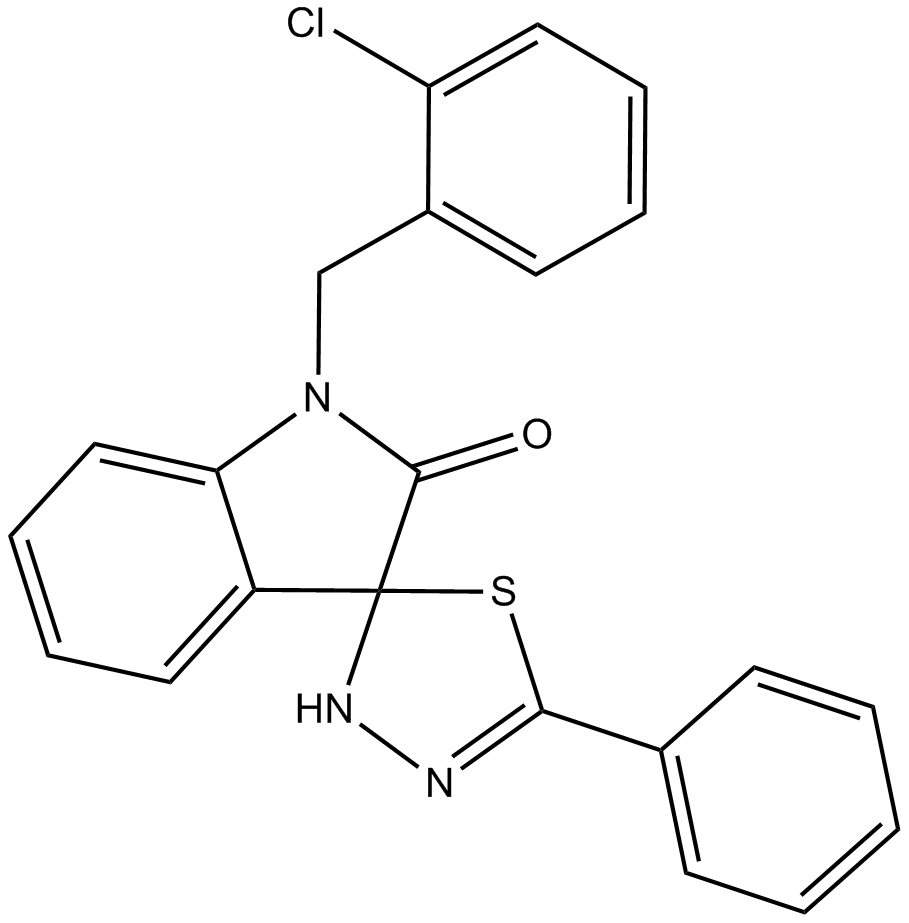
-
GC35668
CG-200745
CG-200745 (CG-200745) هو مثبط فعال عن طريق الفم وقوي لـ HDAC والذي يحتوي على جزء حمض الهيدروكساميك لربط الزنك في الجزء السفلي من الجيب التحفيزي. CG-200745 يثبط نزع الأسيتيل من هيستون H3 وتوبولين. يحث CG-200745 على تراكم p53 ، ويعزز المعاملات المعتمدة على p53 ، ويعزز التعبير عن بروتينات MDM2 و p21 (Waf1 / Cip1). يعزز CG-200745 حساسية الخلايا المقاومة للجيمسيتابين للجيمسيتابين و 5-فلورويوراسيل (5-FU ؛). يستحث CG-200745 موت الخلايا المبرمج وله تأثيرات مضادة للأورام.
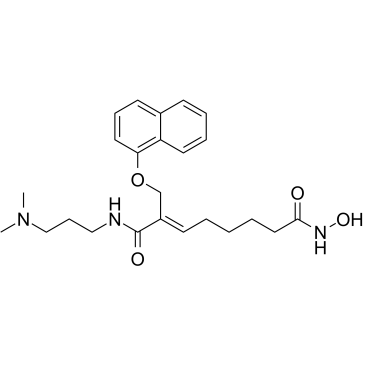
-
GC10666
CGP 57380
CGP 57380 عبارة عن مركب pyrazolo-pyrimidine منفذ للخلايا يعمل كمثبط انتقائي لـ Mnk1 مع IC50 من 2.2 ميكرومتر ، ولكن ليس له نشاط مثبط ضد p38 أو JNK1 أو ERK1 / 2 أو PKC أو الكينازات الشبيهة بـ Src
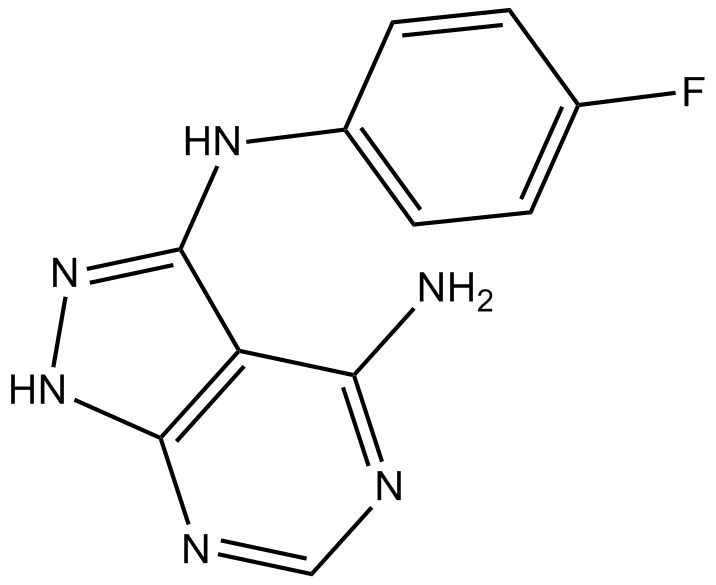
-
GC43234
Chaetoglobosin A
Chaetoglobosin A ، العنصر النشط في مستخلص البنسليوم أكوامارينيوم ، هو عضو في عائلة السيتوشالاسان
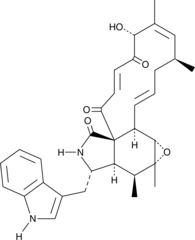
-
GC18536
Chartreusin
Chartreusin is an antibiotic originally isolated from S.
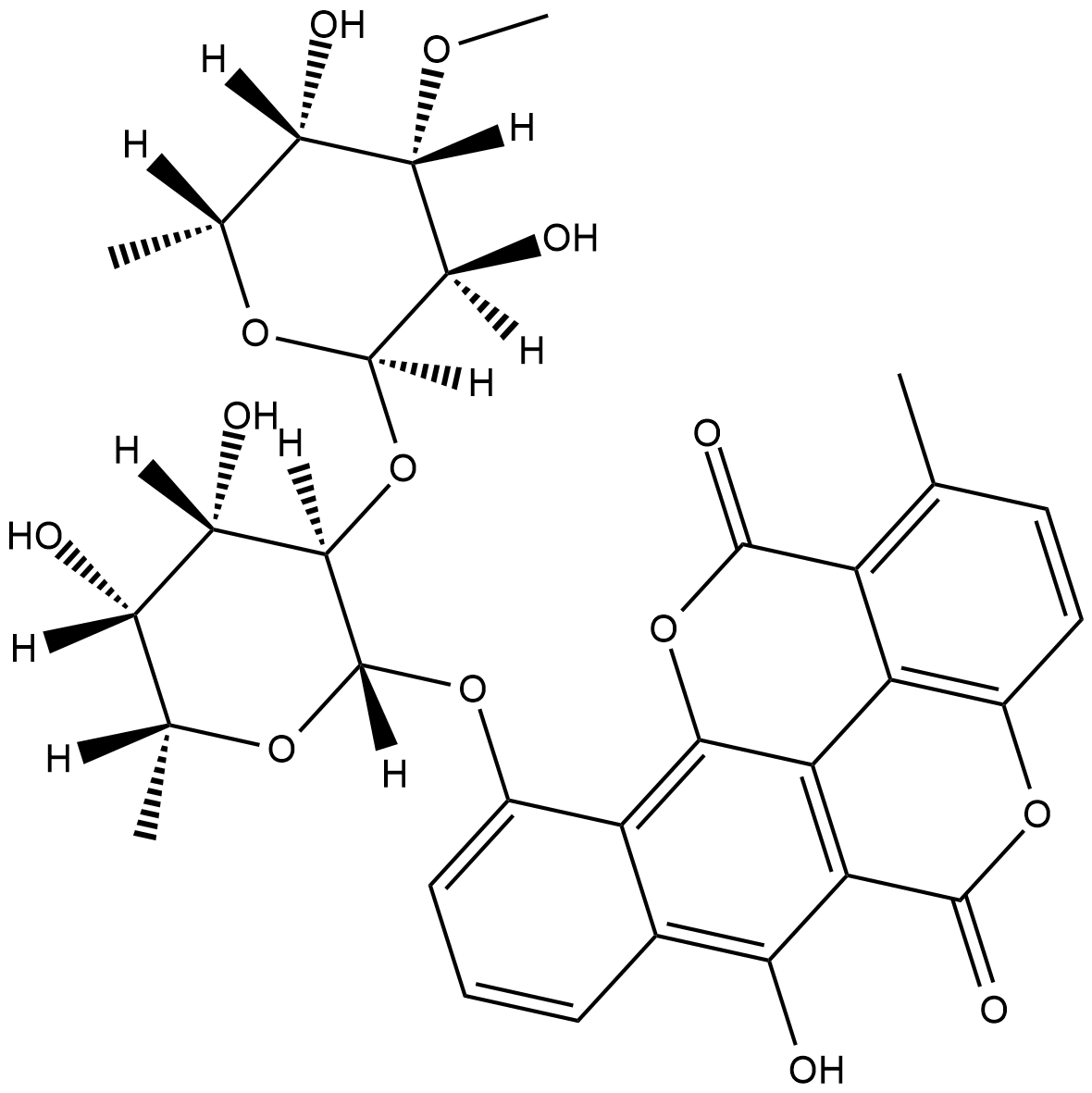
-
GN10463
Chelerythrine
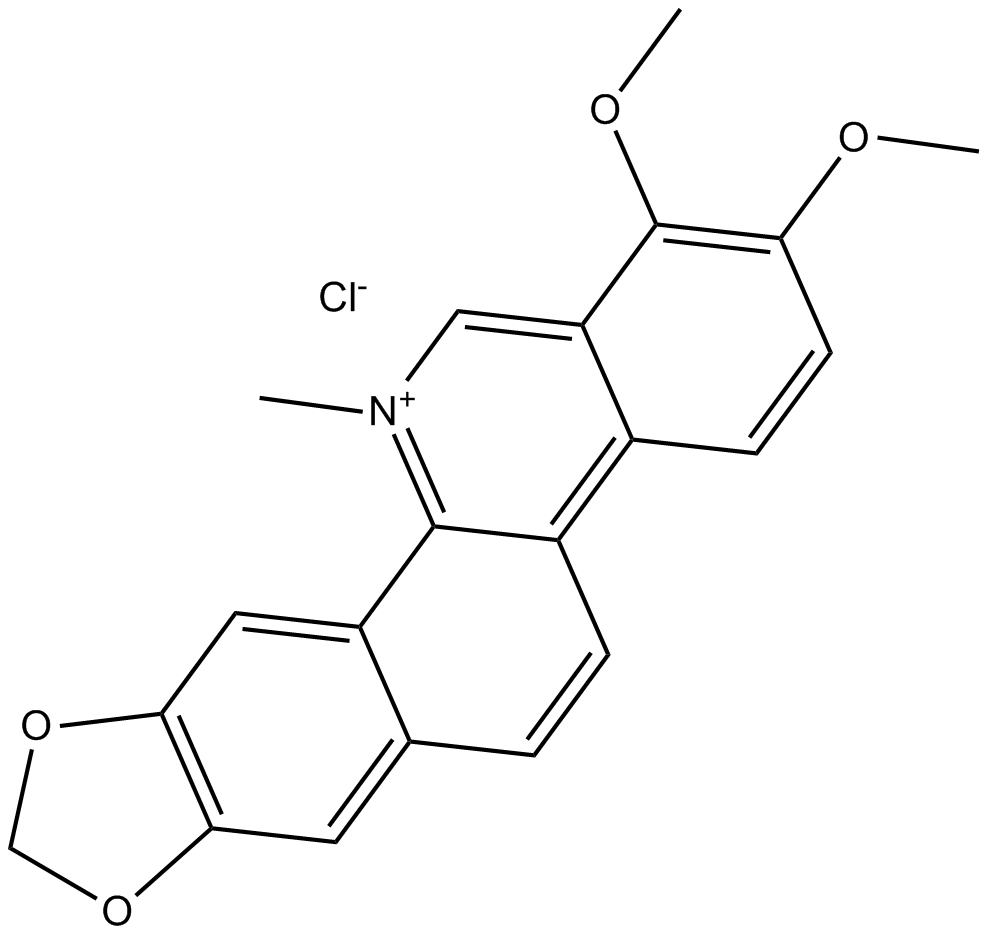
-
GC13065
Chelerythrine Chloride
Potent inhibitor of PKC and Bcl-xL
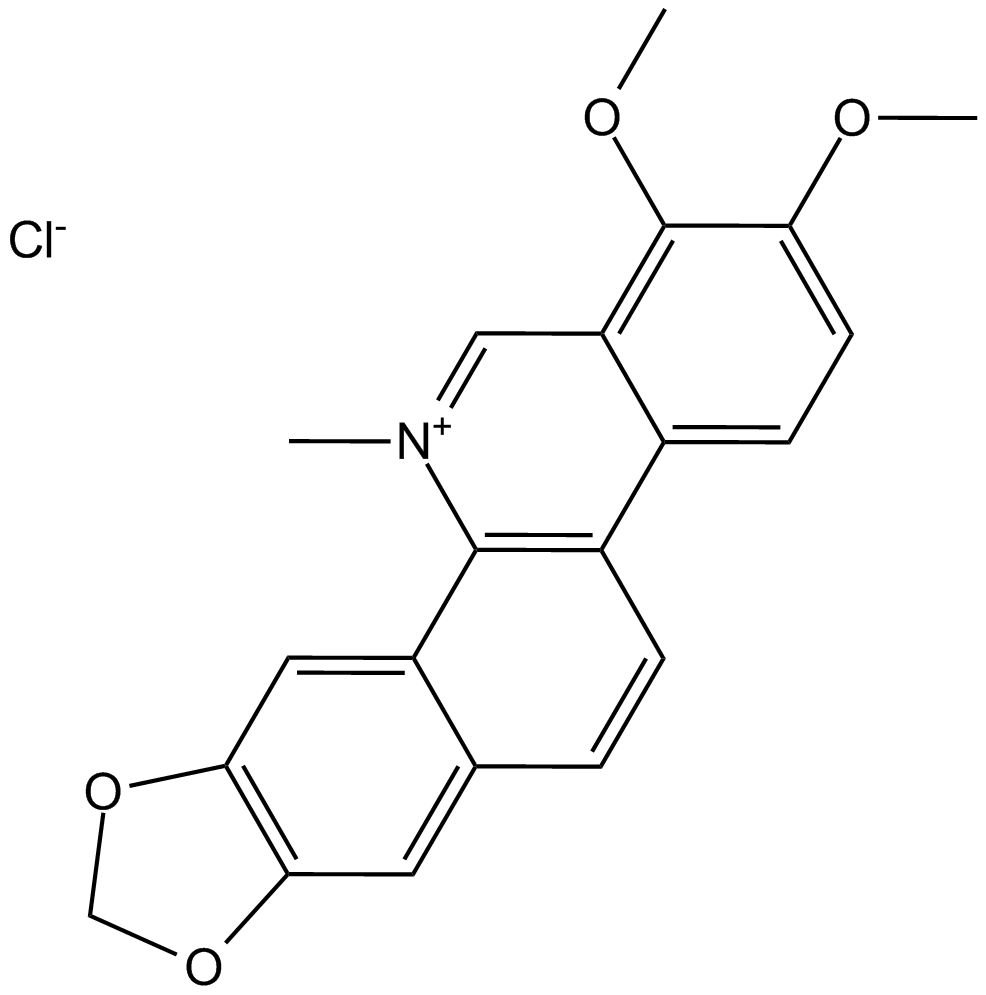
-
GC31886
Chelidonic acid
حمض الكليدونيك هو أحد مكونات Chelidonium majus L
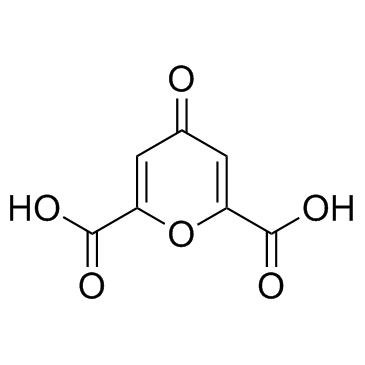
-
GC40878
Chelidonine
Chelidonine هو قلويد isoquinoline ، يمكن عزله من Chelidonium majus L
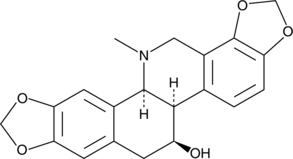
-
GC43236
Chevalone B
Chevalone B is a meroterpenoid originally isolated from the fungus E.
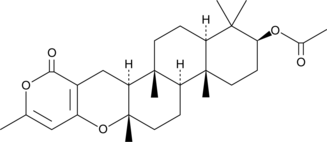
-
GC43237
Chevalone C
يُظهر Chevalone C ، مستقلب فطري Meroterpenoid ، نشاطًا مضادًا للملاريا بقيمة IC50 تبلغ 25.00 ميكروغرام / مل
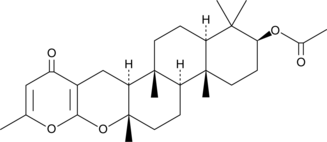
-
GC64993
Chicoric acid
حمض شيكوريك (حمض السيكوريك) ، وهو حمض ديكافيل الطرطريك النشط عن طريق الفم ، يحفز توليد أنواع الأكسجين التفاعلية (ROS)
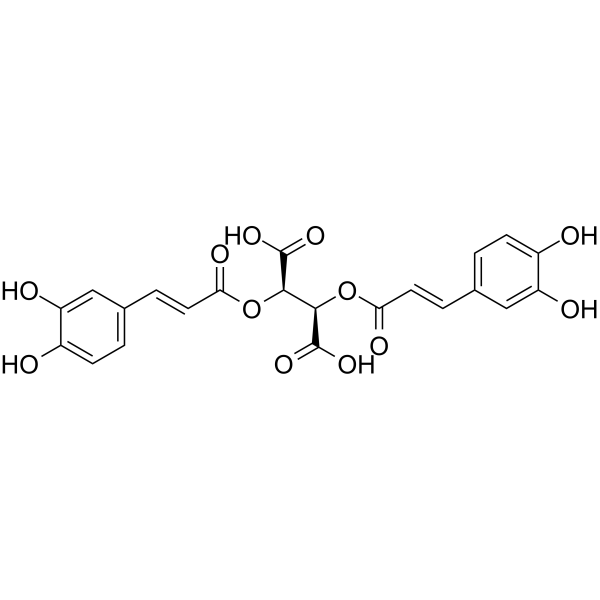
-
GC15739
CHIR-124
CHIR-124 هو مثبط قوي وانتقائي Chk1 مع IC من 0.3 نانومتر ، ويستهدف أيضًا PDGFR و FLT3 بقوة 50s من 6.6 نانومتر و 5.8 نانومتر
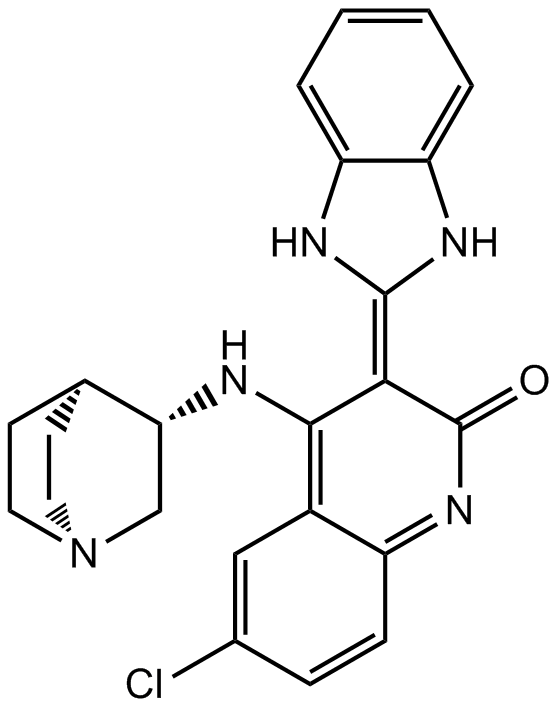
-
GC43239
Chk2 Inhibitor
مثبط Chk2 (المركب 1) هو مثبط فعال وانتقائي لنقطة التفتيش كيناز 2 (Chk2) ، مع IC50s من 13.5 نانومتر و 220.4 نانومتر لـ Chk2 و Chk1 ، على التوالي. مثبط Chk2 يمكن أن يثير ترنح قوي توسع الشعيرات المتحور (ATM) - معتمد على Chk2 بوساطة تأثير إشعاعي.
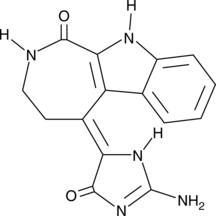
-
GC45717
Chlamydocin
Chlamydocin ، مستقلب فطري ، هو مثبط عالي الفعالية لـ HDAC ، مع IC50 من 1.3 نانومتريعرض Chlamydocin أنشطة قوية مضادة للتكاثر ومضادة للسرطانيحفز الكلاميديوسين موت الخلايا المبرمج عن طريق تنشيط كاسباس 3
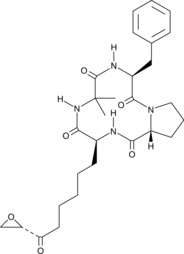
-
GC17969
CHM 1
An inhibitor of tubulin polymerization
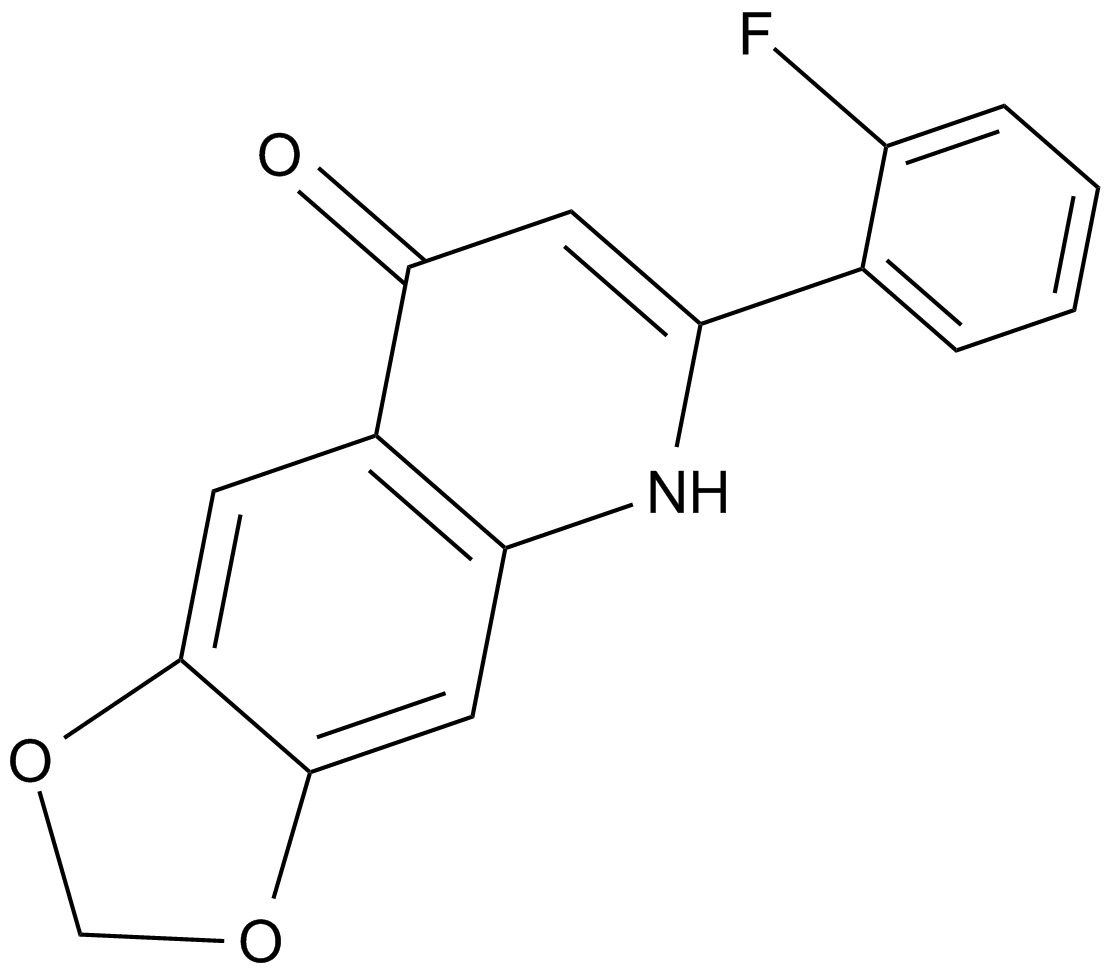
-
GC35682
CHMFL-ABL/KIT-155
CHMFL-ABL / KIT-155 (CHMFL-ABL-KIT-155 ؛ المركب 34) هو مثبط ثنائي كيناز قوي للغاية وفعال عن طريق الفم من النوع II ABL / c-KIT (IC 50s من 46 نانومتر و 75 نانومتر ، على التوالي) ، يعرض أيضًا أنشطة مثبطة كبيرة لـ BLK (IC50 = 81 نانومتر) و CSF1R (IC50 = 227 نانومتر) و DDR1 (IC50 = 116 نانومتر) و DDR2 (IC50 = 325 نانومتر) و LCK (IC50 = 12 نانومتر) و PDGFRβ (IC50 = 80 نانومتر) كينازاتCHMFL-ABL / KIT-155 (CHMFL-ABL-KIT-155) يوقف تقدم دورة الخلية ويحث على موت الخلايا المبرمج
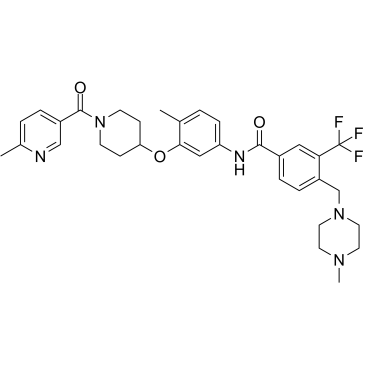
-
GC64028
Chrysosplenol D
Chrysosplenol D هو ميثوكسي فلافونويد الذي يحفز موت الخلايا المبرمج بوساطة ERK1 / 2 في خلايا سرطان الثدي البشرية الثلاثية السلبية
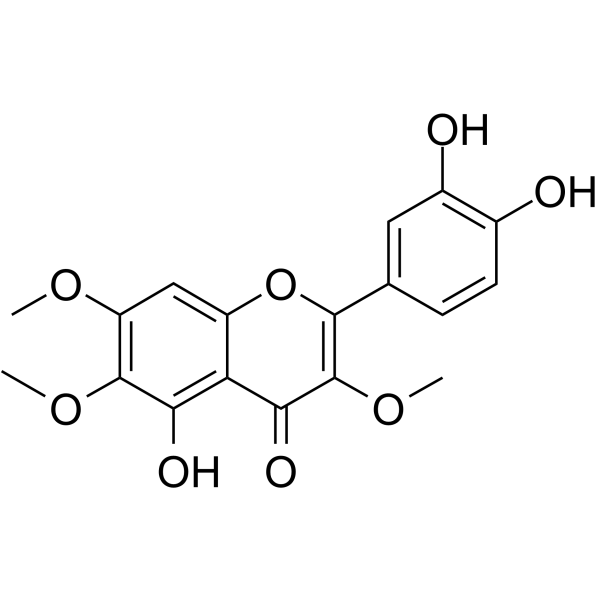
-
GC13408
CI994 (Tacedinaline)
An inhibitor of HDAC1, -2, and -3
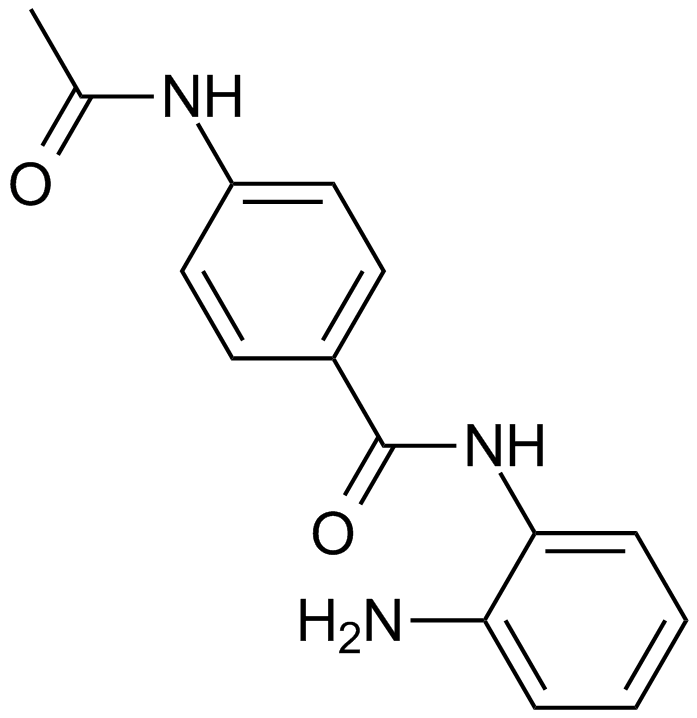
-
GC13589
CID 755673
CID 755673 هو مثبط قوي PKD مع IC50s من 182 نانومتر و 280 نانومتر و 227 نانومتر لـ PKD1 و PKD2 و PKD3 ، على التوالي.
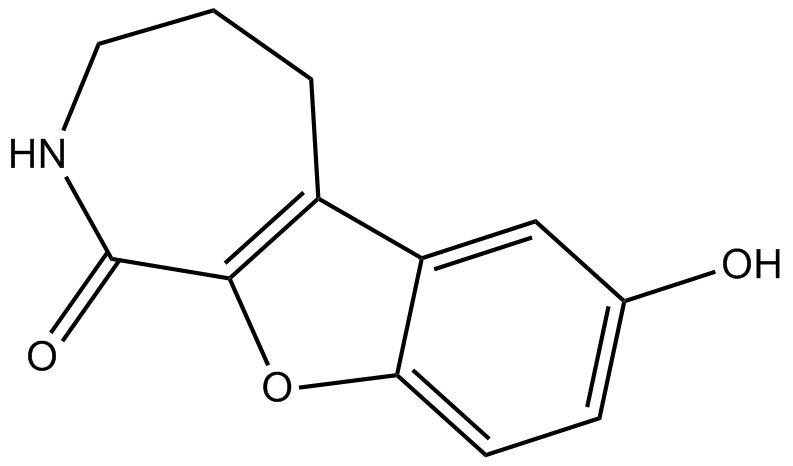
-
GC19436
CID-5721353
CID-5721353 هو مثبط لـ BCL6 بقيمة IC تبلغ 212 ميكرومتر ، والتي تتوافق مع Ki البالغ 147 ميكرومتر.
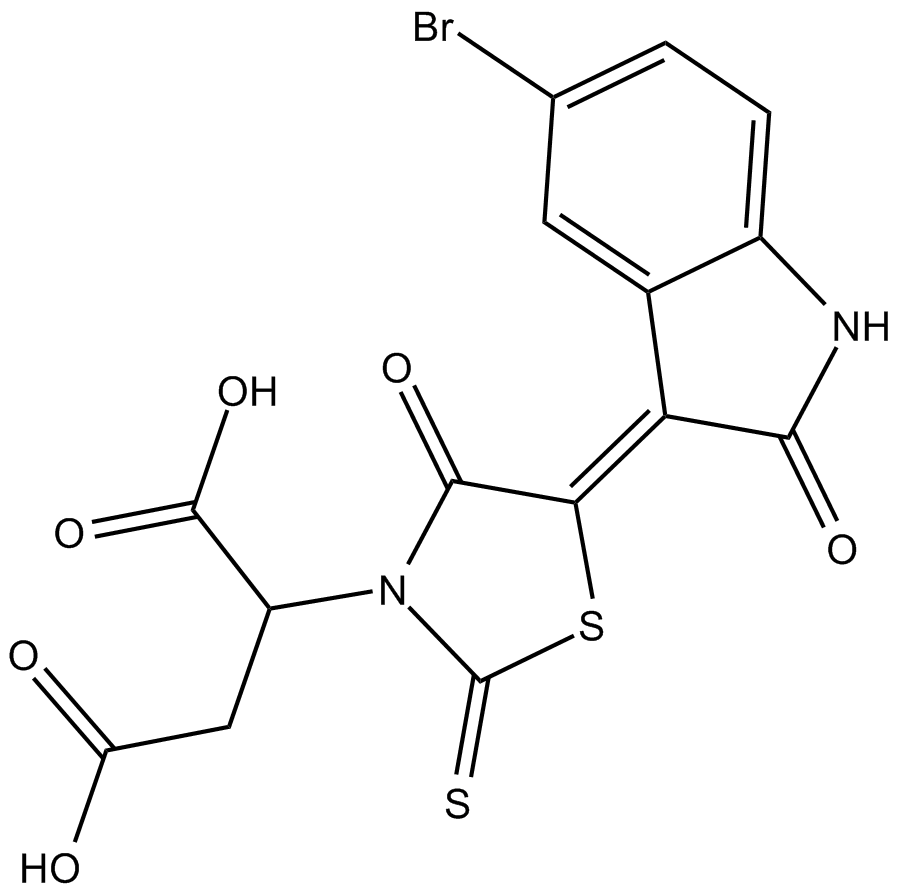
-
GC32997
Cinchonine ((8R,9S)-Cinchonine)
Cinchonine ((8R، 9S) -Cinchonine) مركب طبيعي موجود في لحاء الكينا. ينشط السينكونين ((8R ، 9S) -Cinchonine) موت الخلايا المبرمج الناتج عن الإجهاد في الشبكة الإندوبلازمية في خلايا سرطان الكبد البشرية.
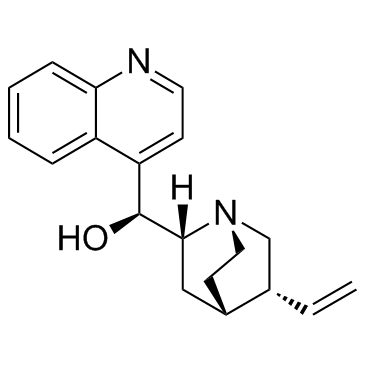
-
GC60708
Cinchonine hydrochloride
سينكونين هيدروكلوريد ((8R ، 9S) -Cinchonine hydrochloride) عبارة عن قلويد طبيعي موجود في لحاء الكينا ، وله نشاط مضاد للملارياينشط هيدروكلوريد السينكونين الشبكة الإندوبلازمية (ER) التي يسببها الإجهاد في خلايا سرطان الكبد البشرية
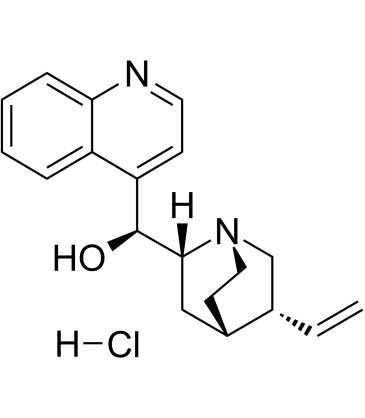
-
GC52269
Cinnabarinic Acid-d4
An internal standard for the quantification of cinnabarinic acid
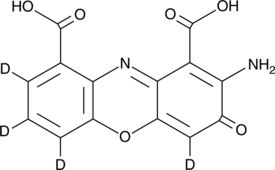
-
GC40986
Cinnamamide
Cinnamamide is an amide form of of trans-cinnamic acid and a metabolite of Streptomyces.
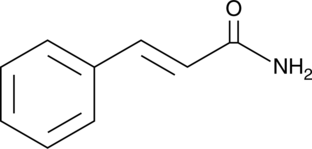
-
GN10189
Cinobufagin
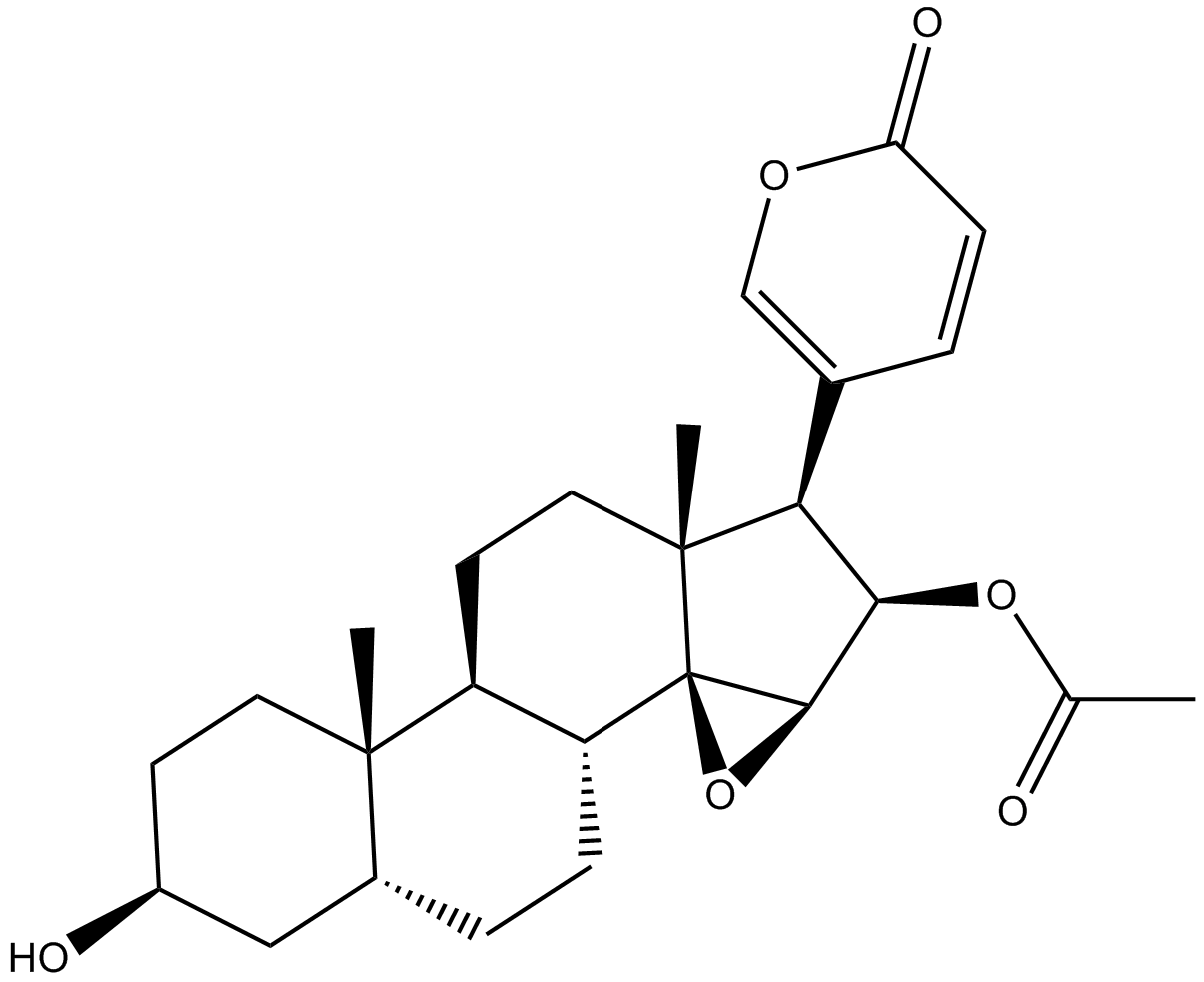
-
GC11908
Cisplatin
السيسبلاتين هو أحد أفضل وأولى العقاقير الكيميائية العلاجية القائمة على المعادن، والذي يستخدم لعلاج مجموعة واسعة من السرطانات الصلبة مثل سرطان الخصية وسرطان المبيض وسرطان المثانة وسرطان الرئة وسرطان عنق الرحم وسرطان الرأس والعنق وسرطان المعدة وبعض السرطانات الأخرى.
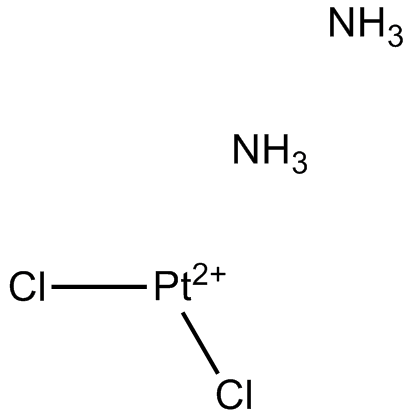
-
GC17491
CITCO
CITCO ، أحد مشتقات إيميدازوثيازول ، هو ناهض انتقائي لمستقبلات الأندروستين (CAR)يمنع CITCO نمو وتوسع الخلايا الجذعية لورم الدماغ (BTSCs) وله EC50 من 49 نانومتر فوق مستقبلات البرنجين X (PXR) ، ولا يوجد نشاط على المستقبلات النووية الأخرى
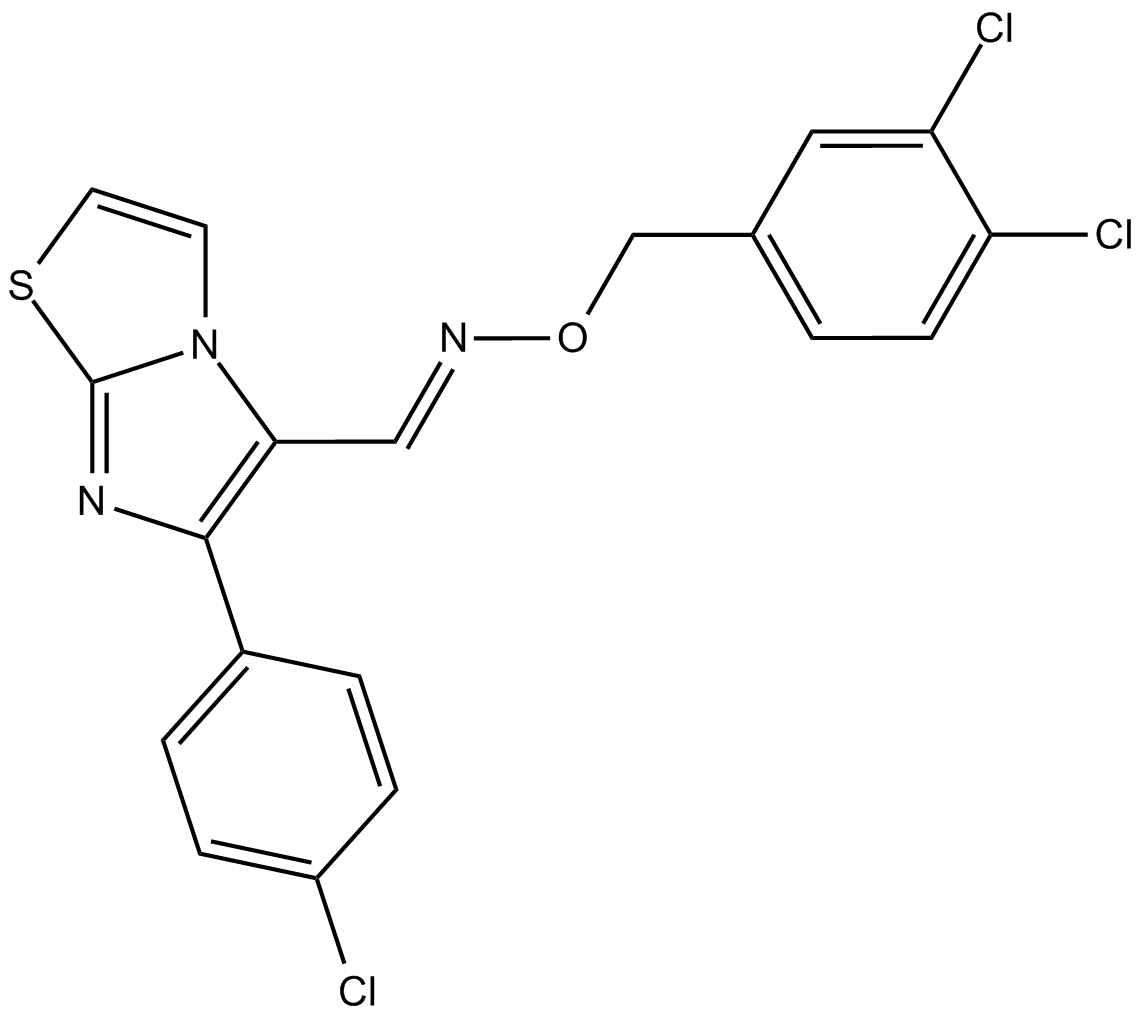
-
GC35703
Citicoline
Citicoline (Cytidine diphosphate-choline) هو وسيط في تخليق phosphatidylcholine ، أحد مكونات أغشية الخلايا
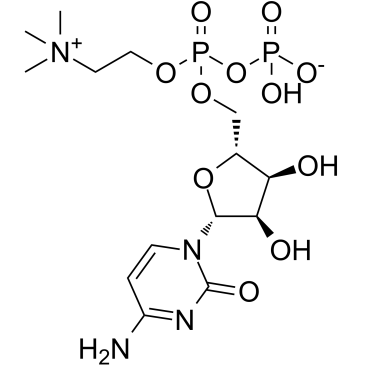
-
GC31186
Citicoline sodium salt
ملح سيتيكولين الصوديوم هو مركب وسطي في تخليق فوسفاتيديل كولين، وهو عنصر من أجزاء غشاء الخلايا والذي يعمل أيضًا على حماية الأعصاب.
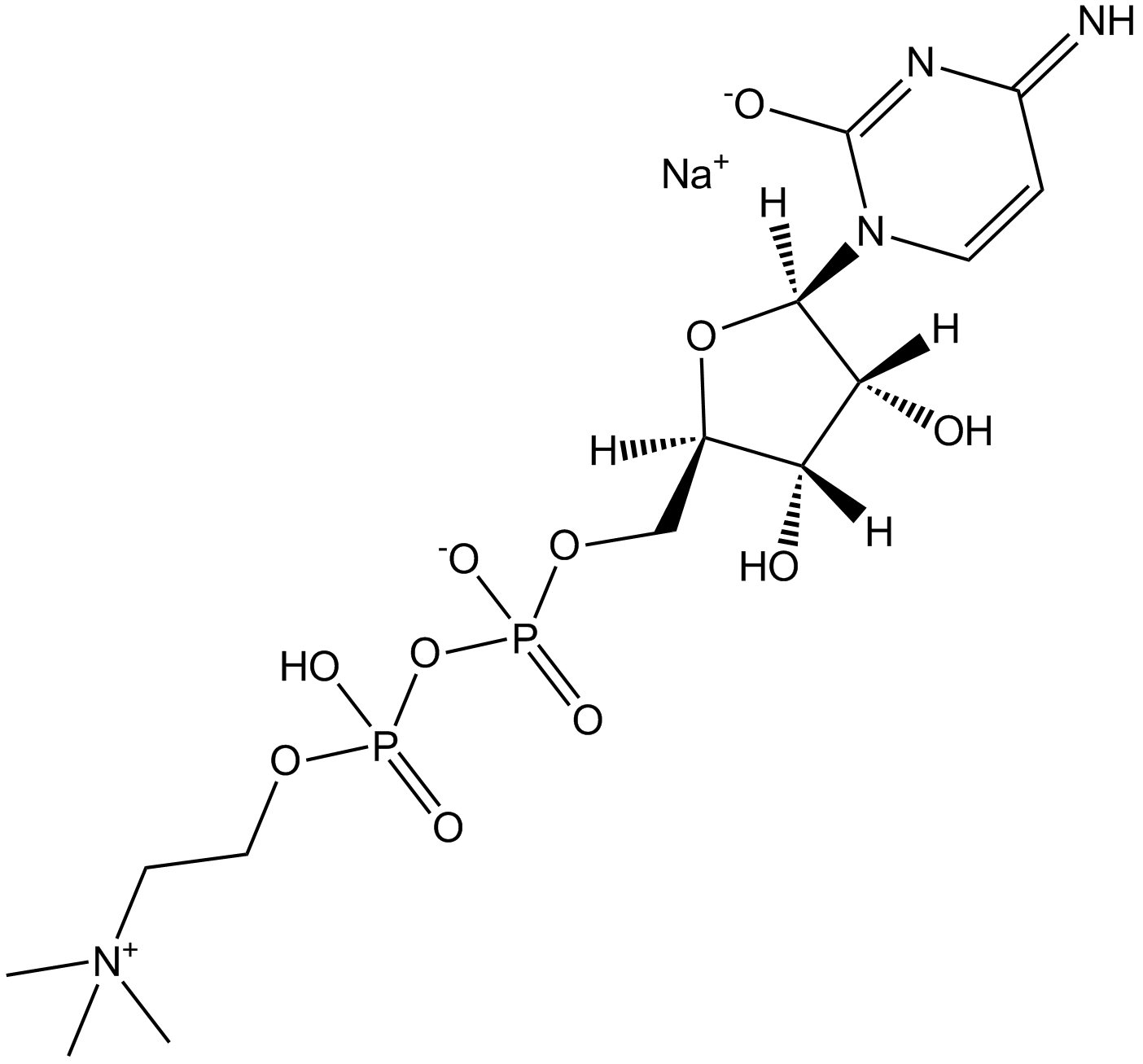
-
GC43273
Citreoindole
Citreoindole is a diketopiperazine metabolite isolated from a hybrid cell fusion of two strains of P.
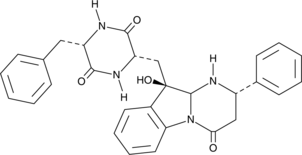
-
GC41514
Citreoviridin
Citreoviridin ، سم من Penicillium citreoviride NRRL 2579 ، يثبط synaptosomal Na + / K +- يتم تحفيزها بشكل كبير بطريقة تعتمد على الجرعة
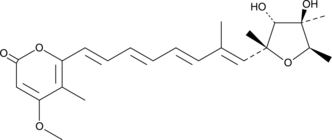
-
GC14203
Citric acid
حمض الستريك هو مادة حافظة طبيعية ومُحسِّن حموضة الطعام
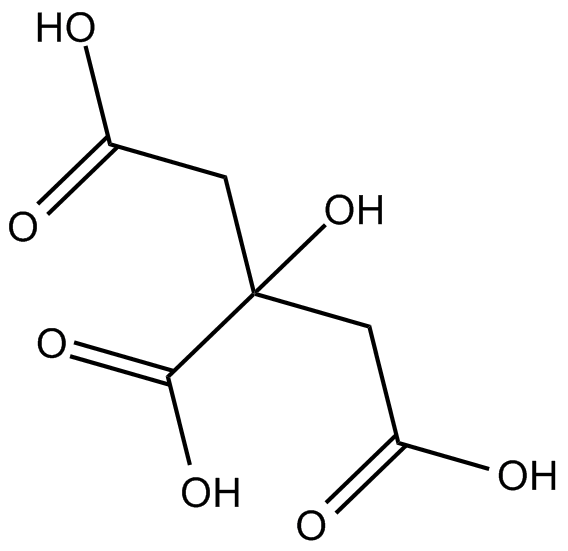
-
GC68051
Citric acid-d4

-
GC16661
Citrinin
ميكوتوكسين يحفز الخلايا على التصلب البرمجي
